








Vertigo acknowledges the Gadigal people on whose lands this magazine is published.
Our team works from the stolen land of the Gadigal and Darug peoples.
We pay our deepest respects to elders past, present and future and would like to extend our respect to all Aboriginal and Torres Strait Islander people who read this magazine.
As we continue to create stories, we cannot go about it without recognising the importance of the Dreamtime Stories that have echoed through these unceded lands for tens and thousands of years, stories which have held knowledge and wisdom for generations.
We also recognise that an acknowledgment is not enough. We continue to call for Indigenous justice, an end to Indigenous deaths in custody, and land back: the return of stolen land from the hands of the colonial forces to their rightful custodians.
Sovereignty was never ceded and this Always Was Always Will Be Aboriginal Land.

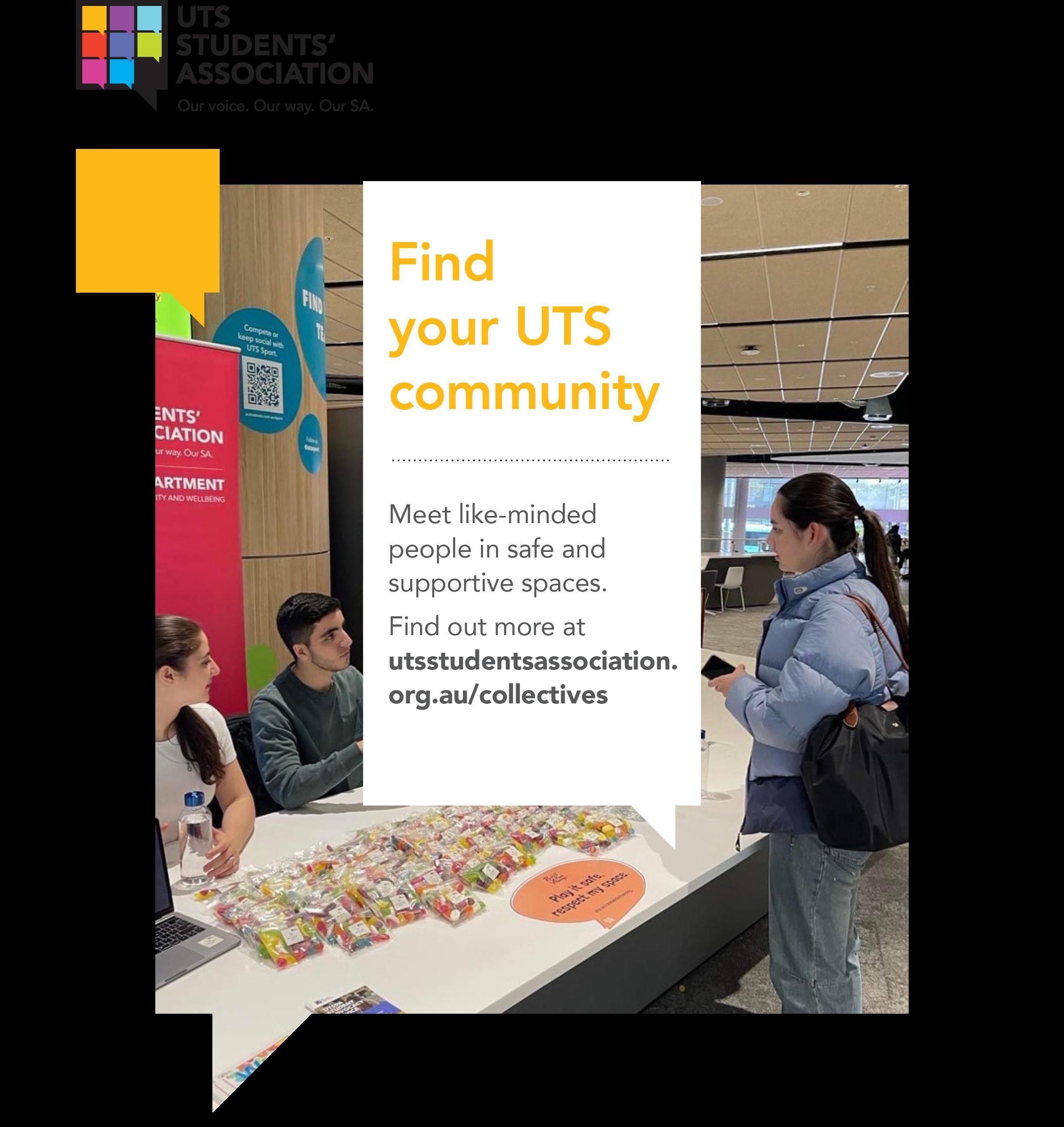

2 Acknowledgment of Country
Meet the Team + Our Advisors

EDITOR’S
Student Intifada: Students Occupy University of Sydney in Solidarity with Palestine
Pasifika Queerness and the Desire for Decolonised Identity in ‘Australian’ Ballroom
by Tyberius Seeto (he/him) by Declan Bolger (he/him) by Mayela Dayeh (she/her)
The Illusion of the Two-State Solution
28 Panjab, Village, 1980’s by Esha Kaur Tiwana (she/her)
MATA by Sara Chaturvedi (she/her)
by
Oliver Whitehouse (he/him)

Living Things: A Cycle by Mia Rankin (they/she) by Maha Syeda (she/her) by David Tran (he/him) by Oluwatimilehin Akindoyeni (he/him) Interview w/ Mia Campbell
Blacklisted: An Ethnography by Aditya Rao (he/him)
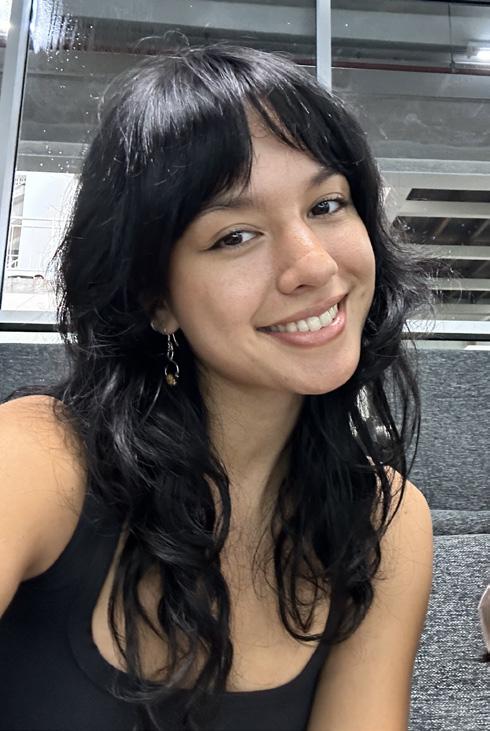
Nǐ hǎo, I am eating pho at SydneyParkwa t c h ingheaps of dogs
Amanda Designer on walks listening to ‘Money for Nothing’ by Dire Straits.



Belle
Bee
Art Director
Néih hóu, I am eating peanut butter from the jar while I roam Parramatta Rd listening to ‘HARDSTYLE’ by Shady Nasty.

Bianca Student News Editor
Olá! I am eating feijoada and rice in my Grandma’s home
listening to ‘O Morro Não Tem Vez’ b y A ntonio
Creative Writing Editor + Assistant Managing Editor
Cześć! I am eating a slightly at the beach at night and I am listening to ‘Strangers’ by Ethel Cain.

Carlos Jobim. underripe yellow p e a c h
David Designer
Xin chào, I am eating tuna mayo onigiri at sunset in Hokkaido and I am listening to ‘Commes Des Garçons’ by Frank Ocean.

Namaste, I am eating a

egg , rice and kimchi on the
Sara Advisory Voice to Vertigo
Central
Coast and Newcastle line and I am listening to ‘Big Country’ by Emile Mossen.
Declan Advisory Voice to Vertigo
Tēnā koutou, I am eating chicken satay and overpriced milk tea at a hole in the wall in Thai Town and I am listening to ‘E Tu’ by Lady Shaka.
Hola, Iam


George Designer
eating arroz con mariscos on a far
away island and I am listening to ‘Keep Me Lifted’ by Michael Franti & Spearhead.
Emersyn Poltics and Law Editor
Hellaur, I am eating 1,000 mangoes at a place I have yet to discover and
I am listening to ‘Ojitos

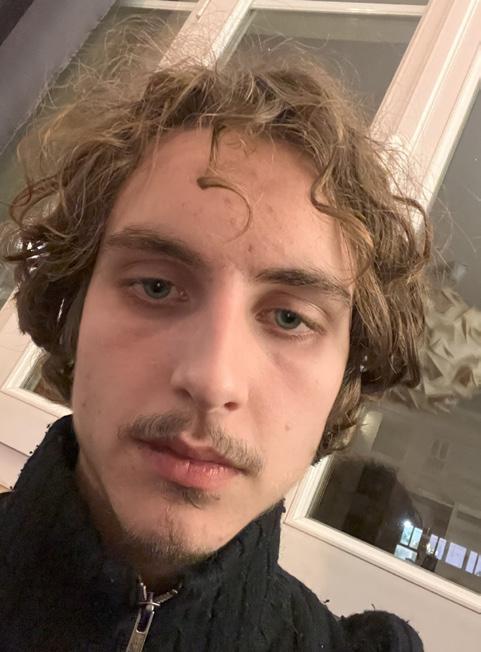

Mannix Advisory Voice to Vertigo
Yiradhu Maranang, I am eating bakedb e a n s a t t he club and I am
listening to ‘Cello Suite No 1’ by Bach.
Mayela Advisory Voice to Vertigo
¡Hola! I am eating choripan with chimichurri in my family home

at my Grandma ’ shous e andIam
Melody Society and Culture Editor
Jambo! I am eating GOLDEN LOTUS PHO on Larrakia Land <3 and I am listening to ‘Monks’ by Frank Ocean.
Omar Advisory Voice to Vertigo
Marhaba! I am eating Palestinian musakhan
listening to ‘If I Die 2nite’ by 2Pac.

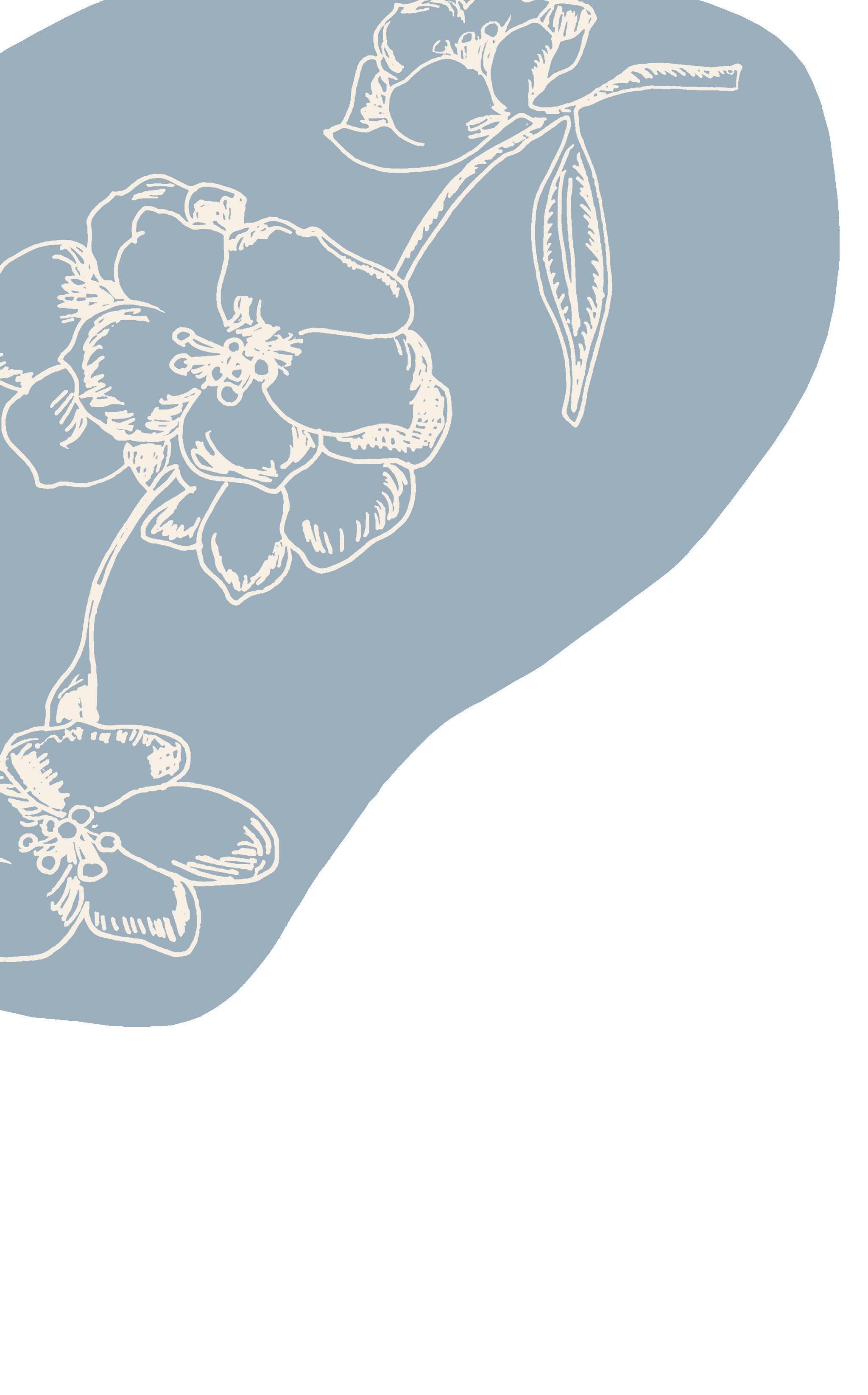


Sawadee ka, I am eatinga d
Mia
Arts and Lifestyle Editor
grilled cheese sandwhich on the B1 to
Wynyard Station and I am listening to ‘Summersong’ by the Decemberists.

Raph Managing Editor
Hiiii, I am eating Korean hot pot at St Peters Station and I am listening to ‘Oya Oya Oya’ by Mim Suleiman.



Esha Advisory Voice to Vertigo
Sat sri akaal, I am eating Mumma’s paneer and roti with kheer at the pind (village) in Panjab
listening to ‘Tibbeyan Da Putt’ by Sidhu Moose Wala.

Ty
Editor in Chief

Konichiwa I am eating katsu curry in Osaka, Japan and I am listening to ‘to here knows when’ by my bloody valentine.
Phoebe Student News Editor
Kia ora, I am eating hot chips on an international flight and I am listening to ‘about you’ by the



Dear Vertigo reader,

I hope this letter finds you well.
Thank you for reading this special edition of Vertigo, a celebration of the experiences and creativity of Bla(c)k, Indigenous and People of Colour. As the Editor-in-Chief of a diverse editorial team, it has been an honour to be able to highlight the experiences of the BIPOC community. This edition is to show our BIPOC peers, colleagues, family and friends that we [Vertigo and the wider UTS community] see you! It is about providing space for those who have historically been excluded from creative spaces to display their art, writing, musings and expressions. It is about challenging the white-normative narrative we are used to viewing, and it is about paying homage to UTS’ BIPOC community.
Whether it be a peek into Mia Rankin’s B-Line trip up through the Northern Beaches, Declan Bolger’s exploration into Pasifika queerness in the so-called ‘Australian’ ballroom scene, or Mayela Dayeh’s explanation on why a two-state solution is NOT a resolution for Palestine, this edition traverses the incredibly complex and multifaceted narratives that constitute the Australian BIPOC experience.
Our team publishes this inaugural BIPOC Vertigo in the hopes that it sets a precedent for future Vertigo editorial teams to ensure our voices are heard in the mediasphere on these unceded lands, which continue to be extremely white.
I really hope you enjoy this edition! It has been an absolute pleasure to see how amazing this community is.
A very special thank you to our external advisors who put their hands up to be a part of our Voice to Vertigo team. Without their diverse perspectives, we could not have
completed this edition to accurately reflect the entirety of the UTS cohort. So to our advisors, on behalf of the team and I – thank you.
But before ending my editor’s letter, I would like to address the current climate our universities have placed students in.
At the time of writing this editor’s letter, myself, along with a dozen other students have been camped out outside the Quadrangle Building at the University of Sydney for almost a month now. We have camped out despite the wind, the rain, the mud and the threats from Zionists who continue to harass and intimidate us.
As students, it should sicken every single one of us of how deeply complicit our institutions remain in this genocide backed by the West. It should sicken us that our institutions continue to partner with Israeli universities that illegally stand on Palestinian land and continue to partner with weapons manufacturers who give weapons to the Israeli Occupation Forces to kill Palestinians in their home land.
By the time this magazine is printed, I do not know if the encampment will be packed up and it will be business as usual, nor do I know if our universities will choose to be on the right side of history by disclosing and divesting. In the meantime, as we continue to watch the West support genocide, we cannot stay silent. And we won’t.
From The River To The Sea, Palestine Will Be Free.
And finally, in my mother tongue,


From Tyberius and the 2024 Vertigo Editorial Team.
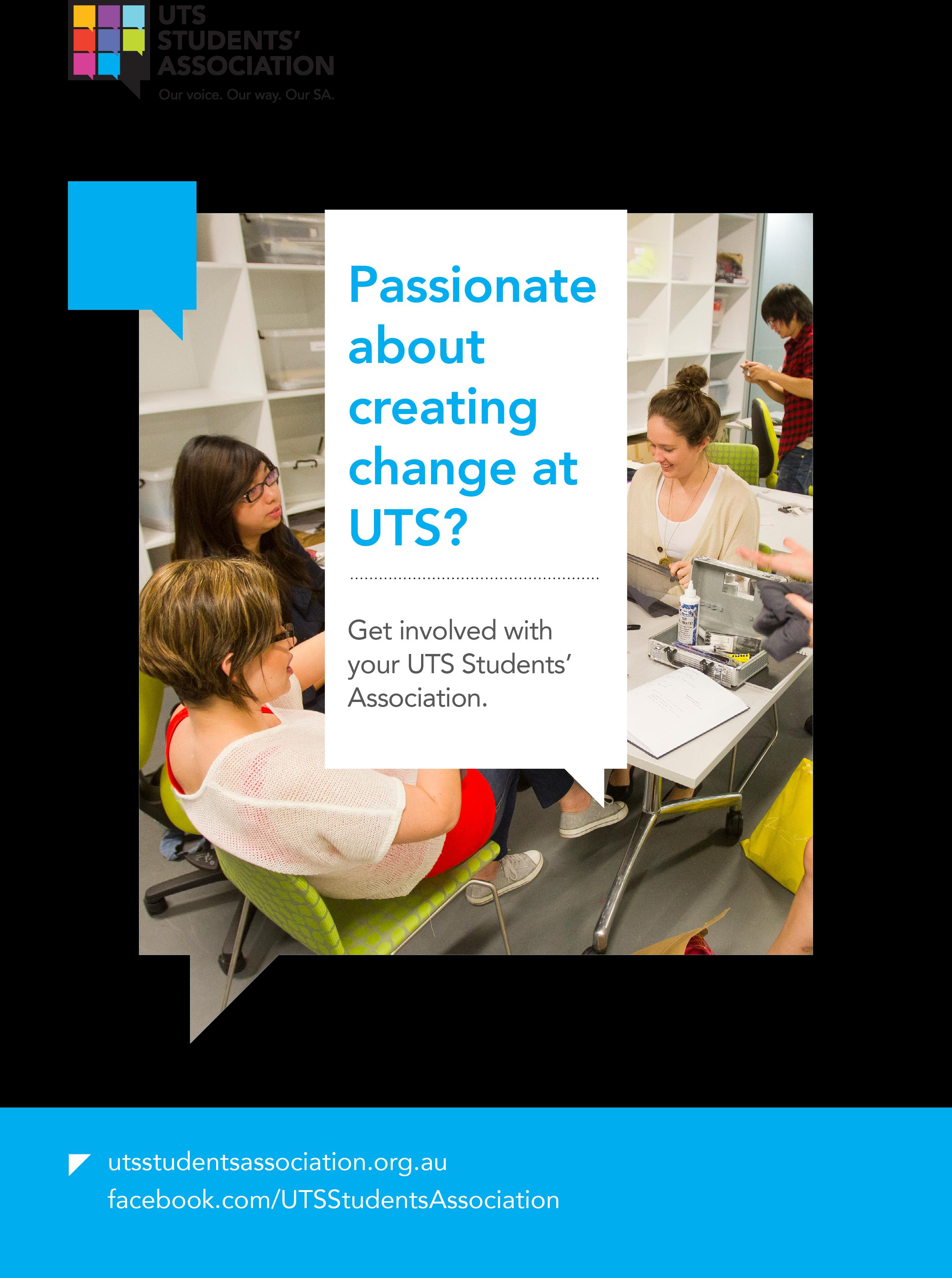
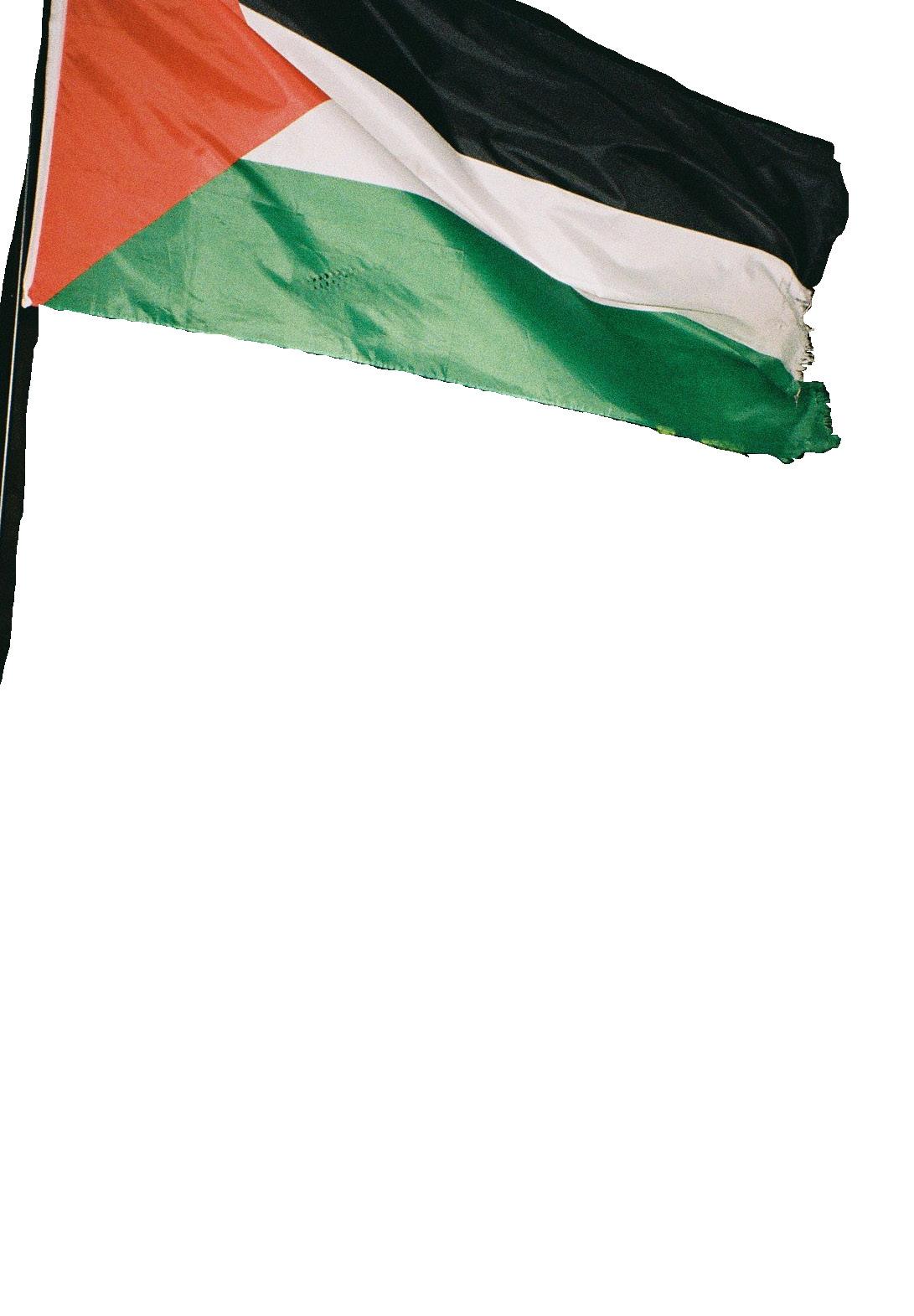
CW: Genocide
Words by Tyberius Seeto (he/him) and photos by Syed Abbas (he/him)
At the time of writing, the Gaza Solidarity Encampment at the University of Sydney has entered its 28th day, making it the longest-running university encampment in the country.
Resisting the wind and rain, student activists at the University of Sydney have occupied the lawns outside the Quadrangle Building for close to a month, with the organisers calling for the university to end its complicity with the genocide of Palestinians by disclosing and divesting away from weapons manufacturers and Israeli institutions.
Organised by the University of Sydney Student Representative Council and Students For Palestine Sydney University, the encampment has grown massively in the four weeks since tents and gazebos began to appear on the lawns directly outside the clocktower of the Quadrangle in late April. Contingents of tents from left-wing factions such as Socialist Alternative, Grassroots and Solidarity now spread out across the outer lawn while the Sydney University Muslim Students Association (SUMSA) take up a large portion of the lawns closest to Eastern Avenue.
As tourists continue to take photos outside the iconic sandstone building and the class of 2024 walk past the tents and gazebos in their graduation gowns, the fight for disclosure and divestment continues for these activists.
As the onslaught of innocent Palestinians fills social media screens, student unions across the country have begun questioning the relationships shared by institutions and weapons manufacturers, as well as Israeli institutions. USyd has an extended Memorandum of Understanding with French weapons manufacturer Thales, as well as partnerships with several Israeli institutions such as Tel Aviv University (TAU) and Hebrew University of Jerusalem (HUJ). The HUJ in particular is known for its Havatzalot program, which trains students for the Israei Defence Force, as well as its partnerships with Israeli domestic intelligence agency Shin Bet, the agency which continues to torture Palestinian prisoners.
The ties with weapons manufacturers is also rife within the management at USyd. Outgoing Chancellor Belinda Hutchinson is on the board of Thales as a non-Executive Director.
USyd isn’t the only institution to have ties with weapon manufacturers. At UTS, the Faculty of Engineering and Information Technologies has a partnership with Thales as well as Raytheon. UTS is also home to The Vault, a Department of Defence compliant facility which allows collaboration between defence companies and researchers, partially funded by the New South Wales Government and supported by the U.S. Department of Defense.

Palestinian student activist Rand said that being a Palestinian in the West means witnessing the genocide of her people unfold in front of her through livestreams on social media, while also attending universities which partner with manufacturers that supply the weapons used for massacre.
“USyd should be doing everything in their power to cut ties with apartheid and genocidal Israel. Israel is not a normal state and should not be treated as such,” said Rand to Vertigo.
“Freedom, justice, and equality, from Gadigal to Gaza.”
A major moment within the realm of student activism, the encampment has been met with praise by community members. The entrance underneath the clocktower of the Quadrangle has become a makeshift kitchen where food is continuously donated.
In conversation with Vertigo, USyd SRC President Harrison Brennan says the encampment has a list of demands they want university management to meet, which includes the university cutting ties with Israeli institutions and weapons manufacturers, and a full disclosure of who and what the university invests in. Brennan also said the encampment will stand as long as they can until the demands are met.
The encampment follows the rich history of radical activism that has taken place at the university, spanning from the Vietnam Moratorium rallies in the 60s and 70s to the 2020 occupation of the F23 Administrative Building in protest of course cuts.

“The SRC is following a long history of tradition of action against war, action against apartheid, [such as] the moratorium marches which the SRC played a really important role in,” President Brennan said.
“This is just one event in one movement in the long line of the SRC legacy of supporting the rights of First Nations and Indigenous peoples across the world, and we’re hoping this action continues really strongly and we’re hoping it builds solidarity among students and among the community as well.”
As days turned into weeks at the encampment, community members as well as other university students began to join in any capacity, from donating home cooked food and holding teach-ins, to even setting up their own tent.
Rallies have become staples at the encampment, with at least one being held a week. Most rallies have ended up in front of F23, banners and megaphones disrupting the workday for management as they look down upon Eastern Avenue.
Escalations from “die-ins”, banner drops, lecture bashes and even the brief occupations of City Road and F23 have become tactics by the encampment to show their seriousness in calling for disclosure and divestment.
Despite the encampment largely being a student-led movement, it has garnered support and solidarity from unions, other university campuses, as well as community groups. The National Tertiary Education Union’s (NTEU) Sydney University branch has thrown its support behind the encampment and their demands, with 93% of members at a union meeting voting in favour of a complete academic boycott of Israeli institutions and cutting
ties with weapons manufacturers. The NTEU have also endorsed the encampment and committed to defending it.
The encampment has been met with solidarity by other Palestinian organisations. The weekly CBD rallies organised by Palestine Action Group swapped their regular meeting spot at Hyde Park to Belmore Park, leading thousands of people up Broadway to the encampment, where the lawns were filled in a sea of black, red, white, and green.
A number of non-USyd students have also set their tents up at the encampment, many reflecting on the ties their respective universities have to Israeli institutions and weapon manufacturers.
“UTS students, too, have made appearances at the encampment in support with UTS Palestinian Youth Society (PalSoc) Vice President Omar El-Sobihy. He spoke to Vertigo about how it feels to see non-Arab and non-muslim students camping out in solidarity as a Palestinian student living in Sydney.

“As Palestinians, the issue has been slept on, but this time around when you look around and you see everyone standing up and showing a level of solidarity, being able to camp for days through the rain and through not the best conditions, it shows a level of commitment we haven’t seen in the past,” he said.
“It’s enlightening to look at it and see it unfold all over the globe.”
Similar sentiments were shared by President of PalSoc and UTS Students Association Ethnocultural Officer Salma Elmubasher.
“To see this many, especially those who aren’t Arab or muslim, who have been camping out which genuinely makes me happy, I feel like finally we have been seen from the other side,” she said.
“It brings me so much happiness when I come here, it brings me so much hope that finally we won’t be forgotten. The conversations I have at home now that we will be forgotten again and my dad’s like, ‘look at the encampment, look at everyone’ (the other encampments).”

“The wall has fallen – people are genuinely seeing what has been happening to us for over 75 years.”
Outside of the political factions, SUMSA as well as the USyd Political Economy Society have shown up in their own respective continents, setting up gazebos and tents in their respective areas of the lawn.
In an interview with Vertigo, former SUMSA Executive Shahbaz Jamal said the encampment represents different communities putting their differences aside to focus on what is happening in Palestine. “Even within our own community, putting our differences aside has been very important,” he said.
“What it represents more openly is that, the agitation it has caused indicates that people sleeping on campus is a powerful weapon because of what it represents: these spaces and these institutions are made up of those people who study here, work here, have studied, have worked here etcetera,”
“Those institutional powers won’t be left unchallenged by those individuals.”
Despite it being peaceful, the encampment has been continuously targeted by Zionist counter-protestors as well as the right-wing media, such as Sky News Australia’s Chris Kenny, as well as a camera crew from right-wing Australian Digital Holdings Television making appearances to both harass and film members of the encampment.
The family day-trip organised by Families for Palestine and Macquarie University academic Dr. Abdel-Fattah attracted an onslaught of racist attacks from the right-wing media. Andrew Bolt, in his column in the Herald Sun, called Dr. Abdel-Fattah’s teach-in with the children at the day-trip a “a low act” while Shadow Minister for Education Minister Sarah Henderson called the teach-in an “abhorrent act”. Some media organisations and journalists even chose to run with headlines and leads accusing the academic of “radicalising” the children.
Dr. Abdel-Fattah responded to these attacks by saying the teach-in was an opportunity for the children to “find a sense of agency in a moment of distress” as well as a way to teach children to stand up to injustices in the world.
“The ones who jumped at the opportunity had been to the weekly rallies for over 7 months, observing and participating in chants and calls for justice, freedom and an end to the slaughter,” she said on X.
“Our children refuse to accept that their siblings must be condemned to be killed by Israel.”
The Executive Council of Jewry denounced the teach-in as ideological conditioning and emotional abuse, accusations which Dr. Abdel-Fattah called “defamatory and racist”. Dr. Abdel-Fattah also said that it was reprehensible for the organisation to portray the children as radicalised violent extremists.
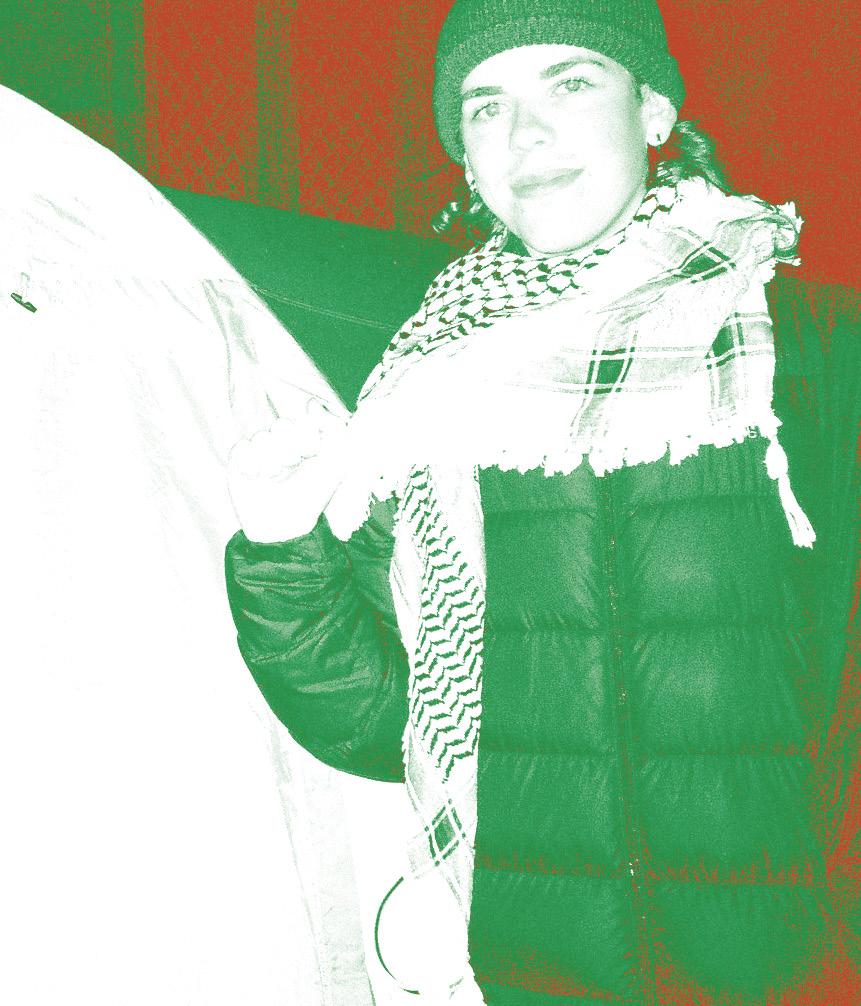
The chant “Intifada”, which means uprising or rebellion in Arabic, and “From the River to the Sea Palestine Will Be Free”, have been targeted by both the media and government. Prime Minister Anthony Albanese, who co-founded the Parliamentary Friends of Palestine, has condemned the chants.
In the context of the encampment, Elmubasher and El-Sohiby say the word “Intifada” means standing up and resisting oppression.
“Zionists will always have an issue with anything we say, our mouth is an issue, ‘River to the Sea’ is an issue, at UTS a watermelon was an issue which is crazy to me, all of these things will always be an issue, anything we do will always be an issue,” Elmubasher said.
“That word [Intifada] existed way before [the First and Second Initifada]. It’s a word in the Arabic language, it’s not a word for them.”
“Just like how “From the River to the Sea” is for us, and how the map [of Palestine] is for us.”
Within the four weeks of the encampment, a notable presence of Zionists have tried to harass and disrupt it. In a now viral video, a Zionist counter-protestor attempted to throw away a box full of banners before being stopped by several members of the encampment, the counter-protestor accusing the encampment of “student misconduct”, and questioning whether the university has allowed for the encampment to go ahead.
The encampment falls in line with the university’s Charter of Speech and Academic Freedom, which recognises the encampment as a legitimate expression of free speech.
The Australian Jewish Association (AJA) has also infamously targeted the encampment, repeatedly slandering the encampment as “Nazi encampments” as well as making suggestions that they wouldn’t be
surprised if members of the public were to “take matters into their own hands”. Five days after that statement was posted on X, two Zionist counter-protesters attempted to wake members of the encampment up at four in the morning by playing a loud Israeli song while holding up the Israeli flag. The pair were there for less than a minute before speeding off as university security began to make their way to their location.
The attacks from Zionists have not been limited to the night and early hours of the morning. Several Zionists, including failed Liberal candidate for Balmain Freya Leach, in tandem with members of the AJA, harassed encampment members, as well as a large counter-rally called by pro-Israeli organisation Stand With Us. Hundreds of Zionist counter-protesters attempted to make their way to the encampment but were met with a picket line of community members who protected it.
While the AJA and other Zionist movements continue to slander the encampment as a hotbed of antisemitism, anti-Zionist Jewish activists have thrown their full support behind the encampment.
Antony Lowenstein, an anti-Zionist Jewish academic and journalist, spoke at a rally at the encampment and highlighted the importance of calling out the lies of antisemitism at encampments across the world. Lowenstein also highlighted how the state of Israel is not reflective of Jewish identity.
Attacks against the encampments from Zionists and the right-wing media was not limited to USyd – the encampment at the University of Adelaide was fired upon with fireworks, while members of the encampment at Monash University were physically threatened by Zionists armed with baseball bats and fire extinguishers. At the Cambridge University encampment in the UK, right-wing GB News attempted to get a reaction out of members of the encampment by bringing in Home Secretary Suella Braverman. Both the reporter and MP were ignored by the encampment throughout the entirety of the segment.
The encampment at USyd follows a global movement taking place at university campuses across the world. Universities such as Columbia University in New York City as well as the University of California in Los Angeles have become forefronts in the media over violent attacks and dismantling of encampments by both police departments and Zionist counter-protestors.
In Australia, the University of Melbourne, Australian National University, University of Wollongong and Deakin University are just some of the few universities who have propped up their respective encampments despite both threats and acts of repression from the media, Zionists, and the right.
Since the October 7th attacks last year on Israel, Israel has launched a major offensive in an attempt to “crush and destroy Hamas” in the Gaza Strip, killing over 30,000 Palestinians as well as destroying almost all infrastructure in the besieged enclave. All 12 universities located in Gaza have been destroyed in the continued attacks.
Despite Israeli officials claiming they are not targeting innocent civilians, refugee camps, hospitals, and even children have been targeted by Israeli Defence Force.
The Rafah Crossing has repeatedly been targeted by Israeli bombing as Palestinians attempt to flee into Egypt while Israeli settlers repeatedly prevent aid from entering into the besieged enclave.
The encampments here at USyd and across the world show that not only is student activism is alive and well, but the fight for a free Palestine remains at the forefront for student activists.

As of 29/4 35,000 Palestinians have been murdered by Israeli forces, including over 14,500 children. Each ribbon in the bowl represents 10 lives. May we never have to fill this bowl again.

Dedicated to the Queens serving the whare/fale/vale down boots. Keep doing it for the culture.
Words by Declan Bolger he/him
Photos by Olachi Zurike she/her
With special thanks to Matt Ham, Danae Harris, and Jubahlee for their words.
Across the Pacific Ocean, pre-colonial Indigenous peoples living on the lands of what is now Melanesia, Micronesia and Polynesia, expressed diverse connections to concepts of gender and sexuality.
From my own culture, the term Takatāpui has been adopted by modern Māori to describe the LGBTQIA+ community. Its roots lie in the ancestral stories of the warrior Tūtānekai, who called his intimate same-sex companion, Tiki, his Takatāpui.
Professor Jioji Ravulo of the University of Sydney, who is of Fijian heritage, has spent much of his academic career exploring the historic fluidity of sexuality and gender in Pacific cultures before colonially-imposed Western standards of morality promoted heteronormative gender roles and binaries.


From Vakasalewalewa from Fiji, Mahū from Hawai’i and Tahiti, Māori Whakawahine and Tangata Ira tane, Niuean Fakafifine, Pinapinaaine from Tuvalu and Kiribati, Samoa’s Fa’afatama and Fa’afafine or Tonga’s Fakaleitī and Fakatangata – these labels expand and provide culturally particular terms for Western ideas about what it means to be queer. Often referred to as a ‘third gender’, more accurately, these examples of Pacific queerness exist on a spectrum of gender and sexuality that exists firmly beyond binaries. While some may also identify as Gay or Transgender, others believe these Western terms to be too limiting to express their whole encompassing gender identity.
The Pasifika diaspora owns these culturally affirming labels and ancestrally approved expressions too; nowhere more fiercely is this evident than in the ballroom scene in so-called ‘Australia.’
Ballroom has always been a space for Queer and Trans BIPOC (Bla(c)k, Indigenous, People of Colour) expression since its conception from the minds of working class Black and Latino gender and sexually diverse people in 1970’s New York.
nce in Ballroo m is an

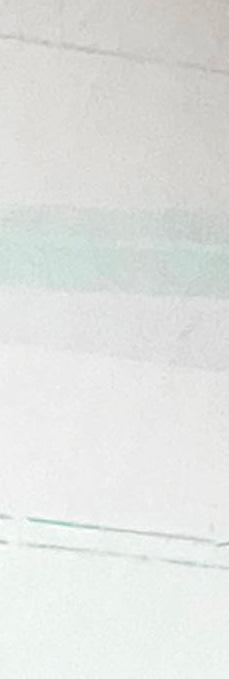


This tradition continues in Oceania, as the Ballroom community thrives under the legacy of Legendary Mother Bhenji Ra, a Filipina fem queen and interdisciplinary artist, who brought Ballroom to Gadigal land through her Sissy Ball. From there, in the Olympics of the Oceanic Ballroom, Blak and Brown queer people across the nation were given a space that allowed them to foster chosen families and compete in pageant-like kiki competitions of dance, fashion, and beauty.

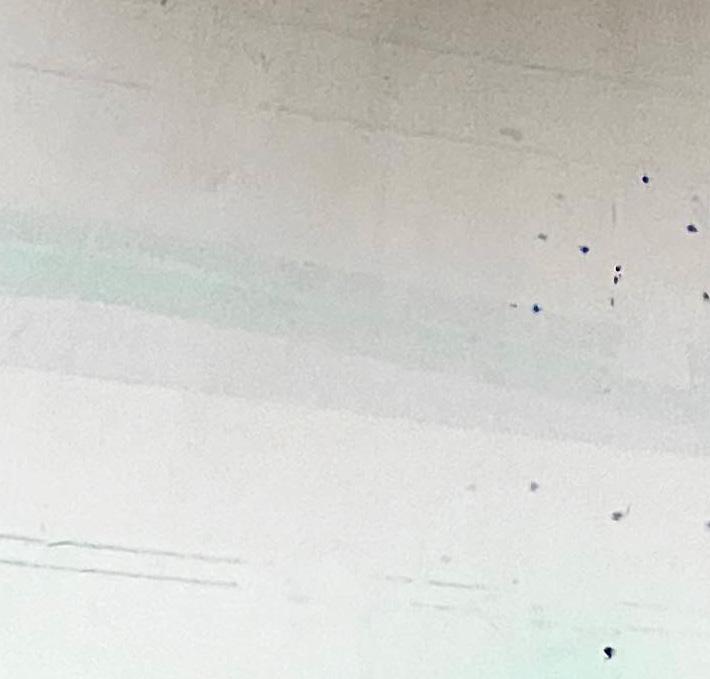
The West Ball, an event highlighting queerness from Western Sydney, was founded by Jamaica Moana – a nonbinary Māori rapper who dominated the MC field in Ballroom down under (who some of you may recognise from her iconic appearance in Season 1, Episode 4 of Netflix’s Heartbreak High). During Sydney WorldPride 2023, trailblazing House Mother Jaycee – who founded the House of Iman – directed Ovah Ovah, an event fronted by Pasifika fem queens and trans women. This event was produced alongside Samoan DJ Rocky Stallone from the House of Silky.
The Godmother of ‘Australian’ Ballroom, Kilia, is a Tongan Leitī who reps the House of Slé.
Meanjin’s own House of Alexander was co-founded by Fa’afafine Ella Ganza alongside Joshua Tailaini, a Bidjara, Kullali, Wakka Wakka First Nations artist. In Naarm, Samoan singer and ‘Baddie Bottom’ Julai has recently founded the House of Diesel.

Across the ditch, Māori-run Te Whare Marama (or the House of Marama) has emerged from founding Mothers Jerome and Karamera.
The Pasifika presence in Ballroom is an act of decolonisation.
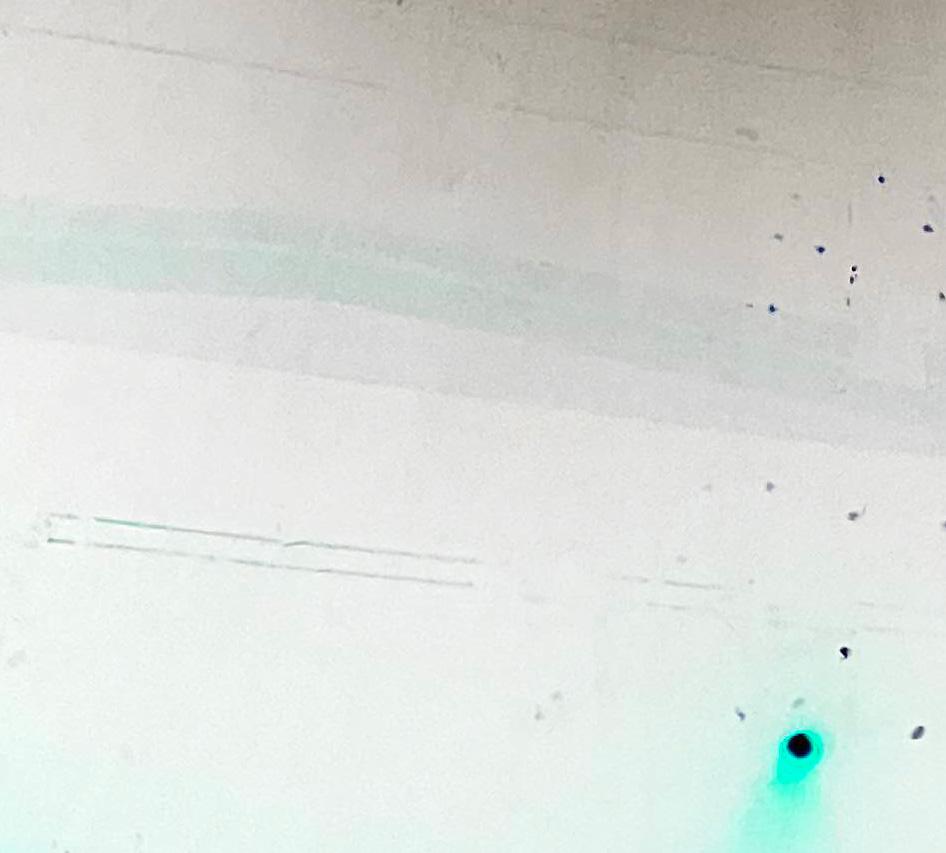

Seeing Afro-Pasifika DJ Lady Shaka, who proudly owns her fem queen identity, siva Samoa (Samoan dance) alongside members of the House of Alexander on a random stage in the middle of Oxford Street at WorldPride 2023 opened my eyes to a whole new world narrated by the one and only voice of ‘Australian’ Ballroom, Jamaica Moana.
The scene fulfils a desire amongst the Pacific diaspora to honour the ways of their ancestors and overcome feelings of shame associated with their intersecting cultural, sexual, or gender identities.
To Matt Ham, as a mixed race Māori newcomer to the Ballroom space, community vogue training sessions became a place where their “Indigeneity is never questioned.”
Danae Harris, who walked the 2024 Sissy Ball in a floor length gown detailed with Māori kōwhaiwhai patterns, said “the one thing that is shared between Ballroom and Pasifika community is how we hold our mana.” Mana is someone’s power or energy. To all Islanders in Ballroom, queer or not, walking that space acts as a medium to express their innate spirit and cultural identity. Similar sentiments were echoed by Jaycee, who in an interview with the ABC explained that with “Samoa being colonised, religious, and conservative, I felt like Ballroom enabled me to cultivate my power and truly thrive,” as a Fa’afafine.
Jubahlee from the House of Silky highlights the value of Ballroom as a space “created and protected by trans women… for trans women to feel liberated.” She highlighted the dangers queer and trans Pasifika people face in conservative island communities.
Stigmas against the LGBTQIA+ community still exist across Oceania. Homosexuality is still illegal in six Pacific Island nations including Samoa and Tonga.

Many Pasifika families hold strong connections to their Christian faiths due to the work of missionaries over the past three centuries. Colonisation from European settlers encouraged Western homophobic and transphobic attitudes amongst Pacific nations, while Christianity continues to be weaponized against queer people’s identities.
Ballroom is a desire to defy these stigmas. The Pasifika diaspora in Ballroom showcases resilience in deconstructing the discriminatory and colonial mentalities that continue to pervade Pasifika communities both in so-called ‘Australia’ and back home. Ballroom in Oceania has developed a space for this decolonised understanding of gender identity to develop further in diasporic communities expressing their own connections to queerness, joy, and identity. It is a space that challenges racism, homophobia, and transphobia all in one flick of a fan – and not necessarily the weaved flax ones islander aunties use at Church.
Identity is powerful. And the intersection of Pacific culture and Queerness in Ballroom is fascinating to watch.
With special thanks to Matt Ham, Danae Harris, and Jubahlee for their words.


We are in the midst of ongoing student protests, encampments, demonstrations, and shows of solidarity with oppressed people in Palestine. Governments have routinely avoided discussing the genocide in Gaza, instead, simply pointing to their commitment to “fostering a two-state solution”. A solution where both Israel and Palestine are able to coexist in the region, peacefully. A solution that, unfortunately, fundamentally ignores the colonial foundation of Israel in the Middle East.
The Holocaust was, and must always be remembered as a blight of humanity. The systematic murder of over 6 million European Jewish People left many displaced and in search of security and community post the trauma of the Second World War. Prior to 1947, there were proposals for the establishment of a Jewish state in Uganda, Argentina, and Madagascar. All of these nations at the time were colonially tied to the British Empire. In an attempt to give the Jewish people a nation state away from the ongoing antisemitism they faced in Europe, no consideration was given to the Indigenous people of these regions.
The 1948 Nakba, which many say never ended, was the ethnic cleansing that expelled over 750,000 Palestinians from their homes. This led to the systemic depopulation of Palestinian Arab communities to pave the way for Jewish immigration. The Palestinian Arab population were displaced into territories known as Gaza and the West Bank within occupied Palestine, as well as to neighbouring countries. Since the Nakba, Israel has committed ceaseless acts of violence against the Palestinian people and has continually violated international law with their actions. Residents of the West Bank have been subjected to Israeli apartheid laws due to the presence of Israeli settlers in the West Bank. Gaza has been subjected to a land, sea and air blockade since 2006, to which residents have had to live in what is described as “an open air prison.” After Hamas’ attack on October 7th, Israel began unleashing its full military strength on occupied Palestine, with the United States as their main backer.
Mayela Dayeh (she/her)
As of writing this, Al Jazeera reports the recent conflict (post October 7th) has led to the deaths of 1,139 Israelis in Israel, and over 37,202 Palestinians in Gaza. This does not include those missing or injured, with injuries standing at 8,730 in Israel, and 84,932 in Gaza.
The issue in possible solutions to this conflict is the nature in which it began. Creating an officially named – as of 2018 – ethnoreligious state in homes that had to be forcefully vacated, has created persistent and distinct strands of nationalism, and fails to foster a “two-state solution.”
The very idea of a “Jewish state”— a state in which Jews and the Jewish religion have exclusive privileges from which non-Jewish citizens are forever excluded — is rooted in another time and place. Israel, in short, is an anachronism. – Judt, 2003
Arguments in support of the twostate solution, which envisions independent Israeli and Palestinian states with borders similar to those drawn in 1967, theoretically acknowledge the rationale behind Israel’s existence and its separation from Palestine. The principal of this separation has been overshadowed by the genocidal reality Palestinians experience daily. It is overshadowed by Israel’s settler-colonialist policies which have seen thousands of illegal Israeli settlements on occupied Palestinian land in the West Bank and East Jerusalem. Palestinian residents are also subjected to constant brutality from the IDF, Israeli police, and settlers who are armed themselves, through countless raids, destruction of property, and unlawful arrests.
Creating an officially named – as of 2018 –ethno-religious state in homes that had to be forcefully vacated, has created persistent and distinct strands of nationalism, and fails to foster a “two-state solution”.
The modern state of Israel was established in 1948, following the United Nations Partition Plan of 1947. This plan was accepted by Jewish leaders but rejected by Arab states and Palestinians, leading to the 1948 ArabIsraeli War. After the war, Israel seized more territory than initially allocated, and no Palestinian state was established. Palestinians then rejected the twostate solution in 1967 for several reasons. First, the proposed territorial division was deeply inequitable. Despite Palestinians significantly outnumbering Israelis at the time, the plan allocated a significantly smaller percentage of land to the Palestinian state. Moreover, the suggested borders fragmented the Palestinian territories into three
non-contiguous parts, making it geographically impractical and economically unviable for the already struggling population. Most of the fertile agricultural land and crucial water resources would have remained under Israeli control, further disadvantaging the proposed Palestinian state.
Historical and modern Israeli nationalism, being centred around the shared trauma of the Holocaust and the struggle for nationhood, has only become more starkly extreme in viewing the Palestinian peoples as an enemy. The rise in extreme nationalism, religious fundamentalism, and anti-Arab racism are not isolated. Prime Minister Benjamin Netanyahu
also promised in 2014 that under his leadership, which continues today, a fully sovereign Palestine is simply “not an option”. He maintains that “This is a struggle between the children of light and the children of darkness, between humanity and the law of the jungle,” and consistently refers to Israel as a bastion of civilisation within the Middle-East. He also stated that “Anyone who is going to establish a Palestinian state and open up territory is giving radical Islam a space to attack the State of Israel.”
‘Palestinian shared trauma is centred around the Israeli establishment and the violence Israel continues to commit against Palestinians. The impact of living under apartheid is profound. Many Palestinians grow up witnessing or experiencing violence, fostering a collective sense of fear, anger, and resistance. This trauma is intergenerational, as stories of loss and struggle are passed down, reinforcing a shared identity rooted in the experience of displacement and conflict.’
While European Jewish history and identity, the identity that transferred to Israel after its establishment, has always had an element of unification over discrimination and social exclusion, Middle-Eastern Jewish identity is often referred to as a tale of solidarity. Israeli historian Yehouda Shenhav writes that Jewish, Muslim, and Christian populations lived in the Ottoman empire with more respect and protection than offered to those in Europe. This history is so often the basis for a two-state solution, however the Israeli genocide and colonisation of Palestinian land has all but barred the possibility.
As Israeli bombardment continues to be the centre of national identity and unity on both sides, the two-state solution must be seen as non-feasible. Yet the Western powers who hold so much responsibility surrounding this genocide are hyper-focused on these “two-states”.
The only solution that has been extended by external actors has been that of the two-states. The power dynamics inherent in Western actors dictating terms to a colonised and oppressed people display in full the colonial attitudes that grew support for Israel’s genocide. If Western actors are truly committed to a “day after the war on Gaza” as we’ve heard so frequently in the media, it should be grounded in commitment to supporting the agency of those who have been oppressed and had genocide waged against them for decades.
Netanyahu has consistently opposed every US stance on post-war Gaza. The agenda still includes partitioning Gaza and establishing apartheid, maintaining occupation, settlement, and the forced displacement of Palestinians. Believing that the two-state solution could be implemented automatically and in a way that brokers peace after the war is simply fantasy. The collapse of this solution after ceasefire will show the cracks
in the region’s future, while Palestinians will be pushed further into lives of oppression and hardship. Israel has set its eyes on Rafah, and the genocide is far from over, with little hope for a peaceful resolution after the rejection of the ceasefire deal.
Other solutions must be considered, beyond beating the dead horse of “twostates that live peacefully with another”, as Israel has demonstrated it is simply not possible.

Esha Kaur Tiwana she/her
CW: Genocide
I watched the sunburnt desert shift into a plain of lush valley fields, Where the tree canopies were packed with an abundance of birds –Eagles, peacocks and doves
The last pearly husks of millet faded into a decomposed brown
The last of the tall corn stalks collapsed to form a bog: Making way for the winter crop
Wheat – Each stalk featured ten closely knit budding grains
Grains that would be sent to the mill in the city
To feed the country.
I envisioned my father in one of these fields,
Helping the two elder generations with the annual harvest: Cutting away at the rotting corn stalks, making way for the wheat.
They didn’t know the harvest wouldn’t reap anything this year.
The mud lanes of the pind (village) in Panjab bore the tapestry of various tracks: Trucks that once used to carry millet, corn, and wheat now carried people
Displaced.
Tractors that once hulled and cultivated crops,
The engines of which rumbled a melody that before never left the villager’s ears
Now quiet
I saw my father in one of these villages
His crackling voice pleading to his mother as she cut off his waistlength hair.
His childish sobs louder than the ascetic harmonium and the eagle’s call – the only sound
In the village that once only knew the music of tractors and religion.
The cries of his mother as the bodies of cousins and family friends came back
Bullets marked on their bodies like walls in 1919.
The whirring of the siren wouldn’t stop for night
It signified the curfew
If you were caught outside after seven you would be shot dead
The shopkeepers who once adorned their stalls with the colours of victory: blue and orange
Closed their shutters
“You couldn’t wear certain colours”
I watched my Dad travel across the landscape of the country
Through different languages, cultures and religions
Fleeing the homeland
Away from the beautiful Panjab
The paddocks
Stained Red
Even when his hair would eventually grow back It would be a foreign land
With People Confused.
Displaced: From themselves
I watched the plain of lush valley fields shift into a sunburnt desert, Far from those old melodious canopies of trees and birds that are now witnesses to genocide

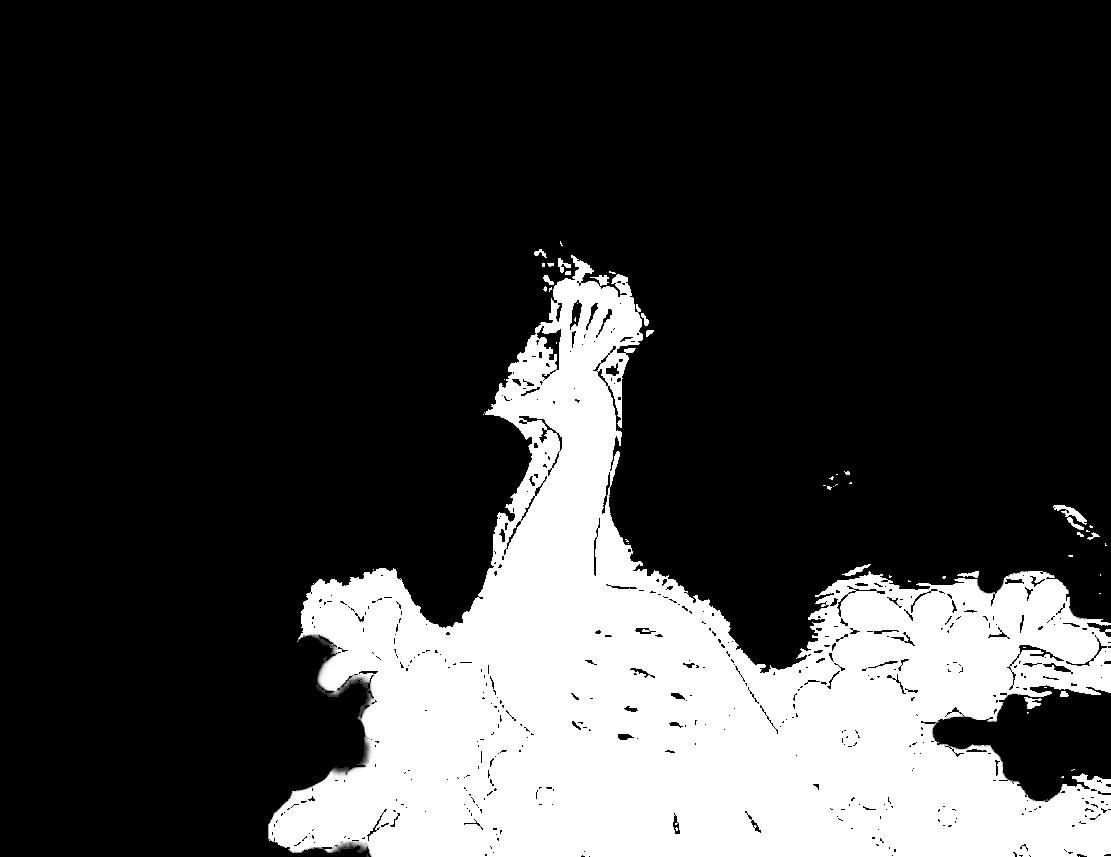


Sara Chaturvedi (she/her)
@sarapcz
[instagram name - @ sarapcz]
“Within the reality of our universal inadequacy, uncertainty and blindness is a limitless capacity to reach out to one another, to hold one another, a limitless energy, a limitless empowerment which is available and accessible directly in our finite limited condition” (Kumari & Vohra, 2021)
The practices of childbirth and mothering by women of colour have been developed throughout centuries of marginalisation. Often perceived in dominant narratives as submissive victims, women of colour are viewed as unaware of their own repression. With the added context of motherhood, women of colour are often associated with child brides, arranged marriages, and forced domesticity; mothers are confined to the impulses of their husbands and children. I argue that women of colour are capable of forming a strong sense of self and dignity, challenging dominant perceptions of South Asian mothers as powerless. India, a nation that sacralises the concept of Bharat Mata (Mother India), is frequently criticised for its nationalist, patriarchal attitudes, leading to centuries of violence and repression. This essay will study the act of mothering undertaken by Indian women in order to critique generalisations used by the West to refer to women of colour. I will investigate the common narratives surrounding Indian motherhood (mostly held by the West), and the manner in which Indian mothers challenge these assumptions.
Conceptualisations of the oppressed ‘Third World woman/mother’ can be seen in both popular culture and academia. The prevalent image remains of a mother as selfless and enduring out of dedication to her family, who in turn limit her to a life of domesticity. South Asian women are consistently portrayed as powerless beings without the capacity for autonomy, resulting in limited forms of analysis and research for policy-making that targets women of colour.
The West has a hesitance to accept both collectivist and individualist points of analysis at once. Rather, a straightforward form of liberation politics is favoured, where “Unquestioning acceptance of the freely choosing individual often conceals the fact that Western women’s wants and desires are quite possibly deformed by the patriarchal structures in which women find their subjectivity” (Bulbeck, 1998).
There is a hypocrisy in dominant narratives – a desire to engage in an advocacy which is uncomplicated but therefore limited in nature. Advocating for a group of powerless women who are silent, unaware victims to their corrupt oppressor is simple; it does not require one to challenge frames of thought and structures one may exist within. It’s much harder to defend an oppressed figure who finds the agency within themselves to retaliate against their oppressor.
The West’s hero complex stretches beyond the realm of gender and has created long-lasting repercussions on entire demographics. The agency of women who partake in gendertraditional religious practices raises the conflicting nature of what is widely deemed as ‘agency’ acting alongside the central values of such religions. With roots in individualist and secular assumptions of liberation, “agency is typically understood through intentional actions that strive for autonomy” (Burke, 2012) But women are capable of agency even within such constrictive boundaries, both in complying and resisting.
A common stepping stone in the conceptualisation of the ‘Third World mother’ is arranged marriages for South Asian women. The media’s representation of arranged marriage almost always ends poorly and is immediately dismissed as a form of control over women’s bodies. While true in some cases, this narrow perception should be questioned. Viewing arranged marriage as an outright negative ignores the social and cultural meaning that nonWestern women ascribe to such practices. The unrepresented process behind arranged marriage can lead to the misconception that Third World women who actively participate in such practices are misguided and are not aware of their own subjugation. In questioning these assumptions, we can further investigate the motivations and guiding principles of women in these communities rather than relying on broad generalisations.
The Caste system is a separate entity to class, but the two are not mutually exclusive. What was once introduced as a system to distinguish various trades and skills has now spiralled into a divisive system leaving lower castes vulnerable at the hands of generational poverty and violence. This is often credited to British colonialism and the contemporary rise of Hindu Nationalism.
surrounding Dalit women, which primarily addresses oppression on the basis of intersections between marginalised identities, often overlook the methods undertaken by women to take advantage of such intersections to resist control and establish actualisation. In the case of Dalit women in rural Tamil Nadu, agency takes forms which aren’t accepted in their nature, such as compassion for a violent husband or producing middle-class honour through respectable femininity.
The decision-making process of these Dalit women in marriage did not concern what would be seen as autonomous in Western understandings (e.g. input in major life decisions, freedom from violence) rather, the possibilities of children, and availability of support systems. These values, and the prospect of experiencing agency through the success of their children and community, should be given the same legitimacy the West
Dalit women reject the traditional narrative that the oppressed are unable to represent themselves and must be spoken on behalf of. In this respect, their rejection of such narratives represents their embodiment as active political subjects.
In the wake of growing awareness surrounding caste violence and oppression, a movement of Dalit writers has emerged to form a “Third space for Emancipation” (Kumari & Vohra, 2021), a space formed by Dalit women spreading their life narratives separate from the casteist pressure of the mainstream. In carving their own avenues, stories of motherhood form an inextricable aspect of these autobiographies, symbolising a search for origins that women often find in maternal roots. The act of articulation acts as a resistance to subjugation and becomes the means of liberation from oppression. In the face of persistent violence and marginalisation, Dalit women have found a capacity through their mothers to create community as a form of limitless liberation.
Through its conceptualisation, notions of domesticity, and even just being physically away from India, home maintains an inextricable link to motherhood in migrant Indian communities. In a short story detailing the experience of a second-generation Indian American, the author highlights the depiction of a mother searching for traces of home (Karmakar, 2022). During her pregnancy, she attempts to satiate her cravings for traditional Bengali food with replacements found in the US. In recreating her memory of home, she develops a new conceptualisation of it – a compromise relating deeply to the gendered migrant experience. In an age where women are expected to contribute financially to the family without relinquishing the balance of the home, diasporic women face the brunt of expectations. Karmakar relates this to the Indian nationalist movement, where women, home, and nation are synonymous. Indian women are expected to vacate domestic settings to pursue a career while maintaining the family, alongside conforming to national tradition. All to be conducted without the physical comforts of home and community.
Particularly fundamental in this reconstruction of home, is the presence of food. In an exploration of the changing use of herbs and spices among immigrant Indian women, of which the majority were mothers, it was revealed that culinary preservation encapsulates the interlocked identity of food and culture, and the majority of the women interviewed prioritised cultural preservation over assimilation (Joseph & Voeks 2021). Particularly for Hindu immigrants, who struggle to find vegetarian options outside of home, respondents reported homemade Indian food to be healthier than options found locally and emphasised a level of distrust with non-homemade food. This reinforces the idea of a controlled home environment, in which mothers are expected to have full agency of. Instead of relinquishing all forms of familiarity to pursue a Western conceptualisation of success, Indian mothers can cultivate their own spaces to actualise the processes and methods they have learnt through their communities and mothers before them.
There is an unspoken division of labour in family migration: men are tasked with settlement, while women handle re-domestication and mediating such processes. Work conducted by women comprises household labour, childcare, and attempts to “(re)construct the community fabric within which they embed their immigrant households” (Manohar, 2019). In such circumstances, under the pressure of nationalist expectations, homemaking can be the sole method by which diasporic Indian mothers can display agency. The act of homemaking remains controversial in feminist discussion, predominantly concerning notions of women’s unpaid labour. Western expectations (which are quickly becoming blurred with Hindu nationalist ideals) denote that women are to vacate domestic spaces for financial freedom. However, in the cultivation of a home, migrant women can develop their own terms of existence within the boundaries set for them and construct a place of solace. This understanding of domestic labour ties deeply with Indian mothers’ sense of freedom through community organising, where all other spaces actively work against their liberation.
The nuclear family dynamic in the West has resulted in a depiction of mothering which is largely taken as universal. To deviate from this standard can easily lead to ostracisation. Additionally, the West’s tendency to view South Asian mothers as powerless figures have resulted in a severe misrepresentation of the community, both in popular media and academia. The ways in which Indian women engage in motherhood have been developed over generations of cultural knowledge, and perseverance throughout consistent avenues of marginalisation. Feminist discussion, which is truly dedicated to critiquing oppressive structures, must also critique the frameworks being used in analysis. To engage in conducive feminist study, the values, aspirations, and hidden agency of mothers in repressive states must be further researched and acknowledged.
You tighten your grip on the rectangle. You prod its surface with your thumb. You remember a dream you had recently about going back to China. You want to find that place from your dream. So you keep scrolling.
One night, when you can’t sleep, you reach for your rectangle A tiny window which presents the world to you as it happens.

You open TikTok, and there’s a video marked #china.

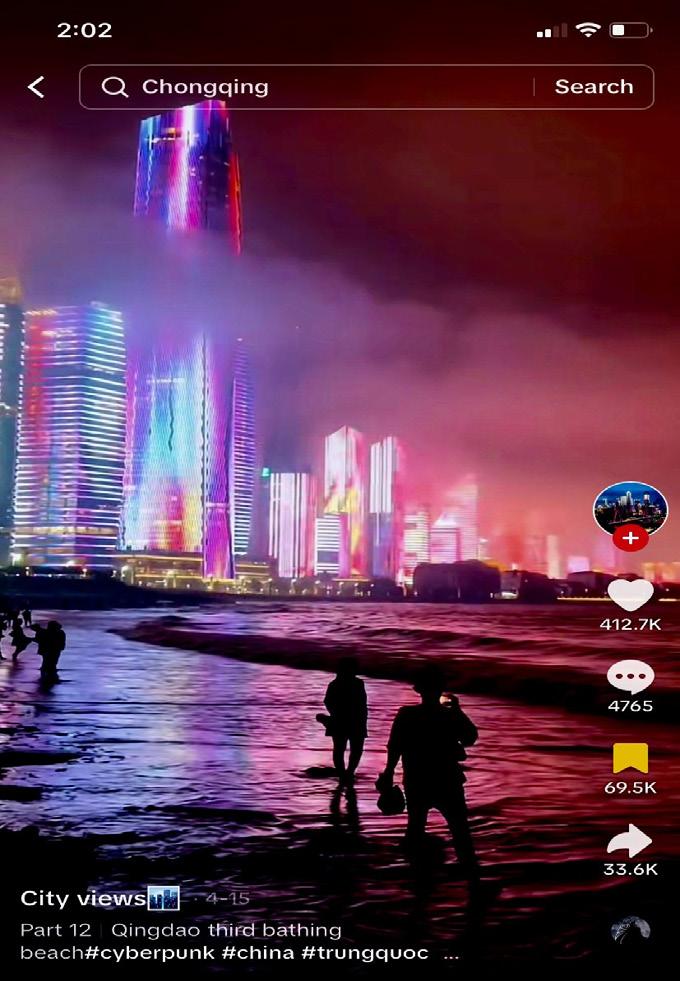
It doesn’t look... Real. Whatever that means.
that look like


You check the caption just to make sure it isn’t an AI generated image. All you find is
You press on the hashtag. You see concrete and glass twisted into impossible shapes.



You see so many windows.

You think to yourself how someone could spend a lifetime counting them, and still not finish.
You grew up in China. But when you see images of it through your screen, it seems almost alien.

You wonder if a place can evoke the same phenomenon:

Everything appears distant, unfamiliar — like strange landscapes flitting by a train window. This reminds you of something you’ve heard before, about the uncanny valley.
These videos of China certainly make you uneasy.
You imagine all the strange images of China that other people might glimpse. You keep scrolling.


You begin to see how the city itself is built like one of its skyscrapers, levels upon levels - an infinite regress of surfaces.
You think to yourself how this app is the same, how everything you see is a surface.

You see a video of someone touring the city Chongqing.



The tourist in the video walks to the end of a street, and shows how there is another street, ten levels beneath the one he’s on.

You wonder if below all those levels, past all the surfaces, you can ever reach the unknown core of the city.
You keep scrolling.
You see a 42-story building on fire in Hong Kong.
You remember this building. You’ve been past it a few times.
Somehow, the thought that it no longer exists doesn’t take shape. It’s still here, right in front of you.
On your screen.


You think about how beautiful the embers look as they drift down from the sky. You think of what happens to these videos, after someone decides that they are no longer relevant (popular), and they get taken off the main feed.


You don’t like the idea of something existing so permanently. You really just want to experience these specific moments in time, and not have these images remain, other than in the memories of those who had been there, and had paid attention.
But insisting on this makes you seem odd, a little unstable.

n the place where your house used to be, there are apartments. You recognised nothing. You quickly realised that these buildings were cardboard cutouts.

You tighten your grip on the rectangle. You prod its surface with your thumb.
You remember a dream you had recently about going back to China.
You went to visit Guangzhou- the city where you grew up.

You pushed one over with your hand. Under the skyscraper, tucked away in a small alleyway, was something you recognised.
A store that sold skewers of meat.
It was grimy and small, and the shopkeeper stared at you funny.
But at least it was untouched by strange algorithms and devices.
This was real. At least to you it was. You sat down and ate a skewer.

You want to find that place from your dream
So you keep scrolling.


Your battery runs out and the screen goes dark.



You see your eyes in the cool, black glass.
It wasn’t until I left high school that I understood being asked whether or not I owned a boat was not a normal question. Up to that point, I just assumed I was some outlier for not having one in the same way that I assumed I was an outlier for living in a tiny apartment or having a mother with a thick Thai accent who couldn’t pronounce her V’s. I tried not to be embarrassed by these things, but I was. Push it down, push it down.
I’ve always had this sense of inadequacy following me around like a black dog ever since I was small. In primary school, kids would ask me where I was from and they would be disappointed when I replied “... Australia?” Similarly, they always seemed unsatisfied when I told them that I was not, in fact, related to my Indian friends. Of course
I had to be lying! Why, we were the only brown kids in our year, so we must all be cousins! Silly me.
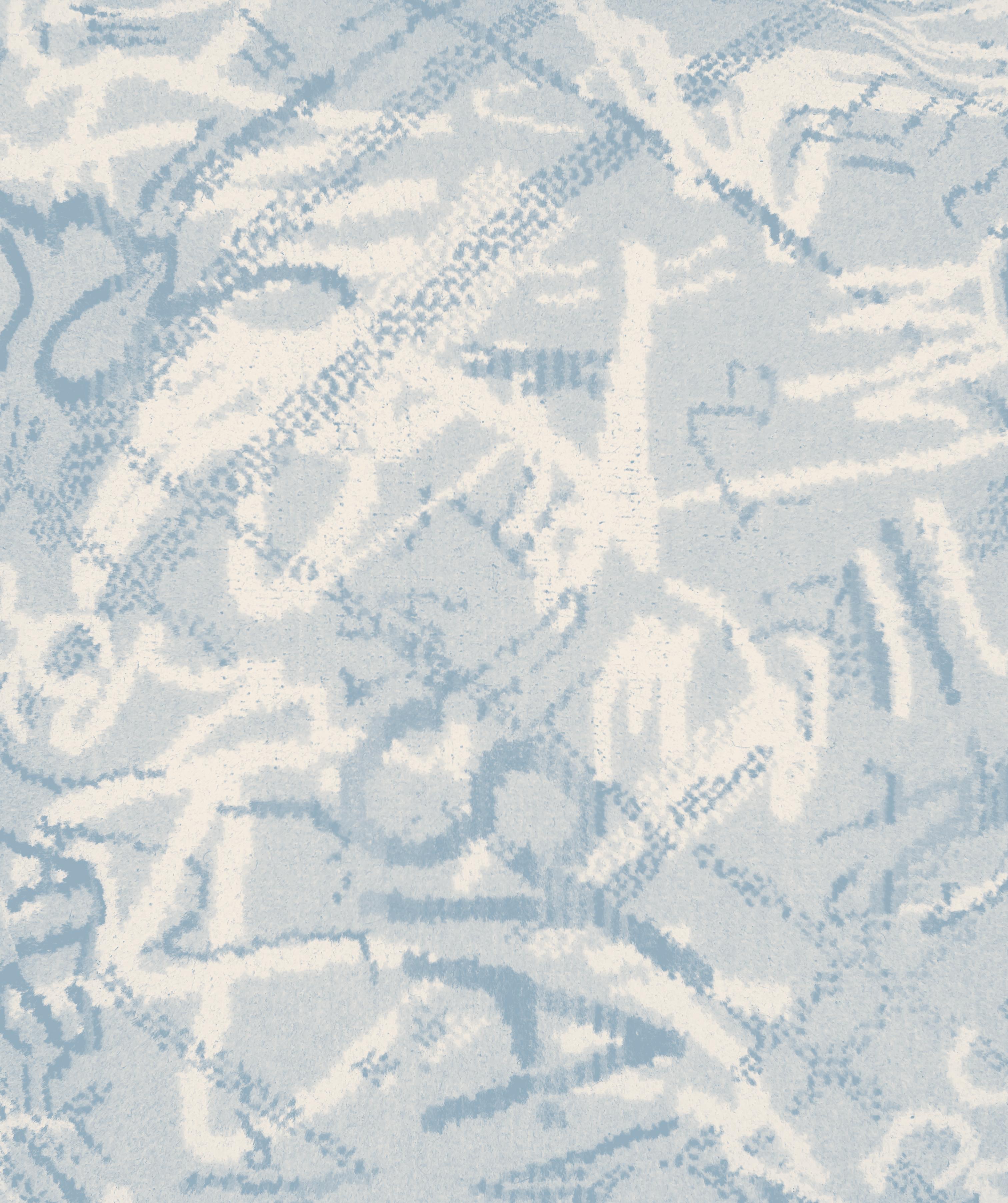
“I would’ve never guessed that you were from the Northern Beaches.”

Someone said this to me a few months ago during an interview I was doing for Honi Soit, and I’ve been thinking about it a lot lately. I think about the way I behaved before I revealed this fact – self-deprecating, probably rambling about the work I do for Vertigo and my desire to see more people of colour submit their work. I remember what I was wearing that day, too: my oversized X-Ray Spex shirt and baggy Uniqlo parachute pants. It takes a trained eye, but once you’ve had a bit of practice, you can spot a Northern Beaches youth from a mile away. Typically blonde, but brunettes exist in Manly too. For girls, it’s Lululemon leggings or White Fox sweats. There’s no in-between. Their skin tight tops are usually covered up by black puffer jackets in the winter, and they trade their white trainers (Nike or Reebok, usually) for Uggs. For boys, the mullet is usually a dead giveaway, but even then, you don’t really need to check out what they’re wearing. Their obnoxious attitude tells you all you need to know.
...the Northern Beaches is where funky self-expression goes to die.

Setting the obvious race reasons aside, I always feel like I stick out like a sore thumb. Dressed in loud, colourful knitwear, thrifted jackets and dungarees, I’m no better than your stereotypical Inner Westie, really. But the Northern Beaches is where funky self-expression goes to die. I remember, one time, a friend ran into me while I was waiting for the bus at Warringah Mall. “Of course I recognised you,” she said. “Who else here wears a leather jacket and a massive sweater with a duck on the front?”
When I think about people being unable to guess that I’m from the Beaches, I can’t help but wear it as a badge of honour. I’m embarrassed by where I grew up, in part due to the fact it’s a rich area, but also because the reputation of its residents is well known. Of course they don’t want a train line here –how else would they keep the foreigners and immigrants out?

At uni, I’m often asked, “Whereabouts in Sydney are you from?” It’s a standard question, a good point of reference and icebreaking. Most people don’t know where Brookvale is, and if they do, it’s probably because they’ve had a Brookvale Union brew or they actually follow Rugby League. I always explain its geography by saying it’s a ten to fifteen minute bus ride to Manly. Realising how obnoxious that makes me sound, I always instinctively follow it up by cracking, “It’s one of the two ethnically diverse suburbs on the Northern Beaches” (which I do genuinely believe, by the way – that and Dee Why, for all the gentrification it’s gotten over the years). Then, if I’m feeling really embarrassed, I follow that up with, “I can tell you exactly where the melanin stops. Once you’re past Collaroy and Narrabeen, it’s just white people. That’s the border.” And again, it’s true – I did work experience at Avalon Public School while I was in high school and there were maybe one or two POC kids I saw during my whole time there.
When people find out I’m from the Northern Beaches, their responses are usually as follows:
a) Well, you’re rich, then!
b) Take me to your mansion one day.
c) That must be so nice, being able to surf ...........and swim whenever you want.
d) Oh… you don’t get trains up there, right?
e) Is that the North Shore?
When I think about people being unable to guess that I’m from the Beaches, I can’t help but wear it as a badge of honour.
And the thing is, mixed in with this feeling of embarrassment, I get this white-hot surge of resentment. I know I grew up in a nice area. But I live with my single mum who speaks two languages and works eight hours a day at Dee Why RSL. I’ve seen the burns on her arms and the callouses on her hands. If there’s more than three people inside my apartment I get claustrophobic. I didn’t go to a private school, I never went skiing during the school holidays, and I sure as hell don’t own a yacht. Not to mention the most glaring one: my mum and I have copped so much racism and microaggressions from the rich white people around us all our lives here. I’m not working class, but I’ve never felt like I belonged on the Northern Beaches, and for a time, Australia in general.
But I can’t complain. If I do, I’ll look like a privileged twat, or worse, a privileged twat desperately trying to make themselves appear relatable to the lower classes. And I can’t get angry either. I have to play it off, make a joke, patiently let peoples’ assumptions about me go.
Always an alien, always an outsider. Always inadequate.

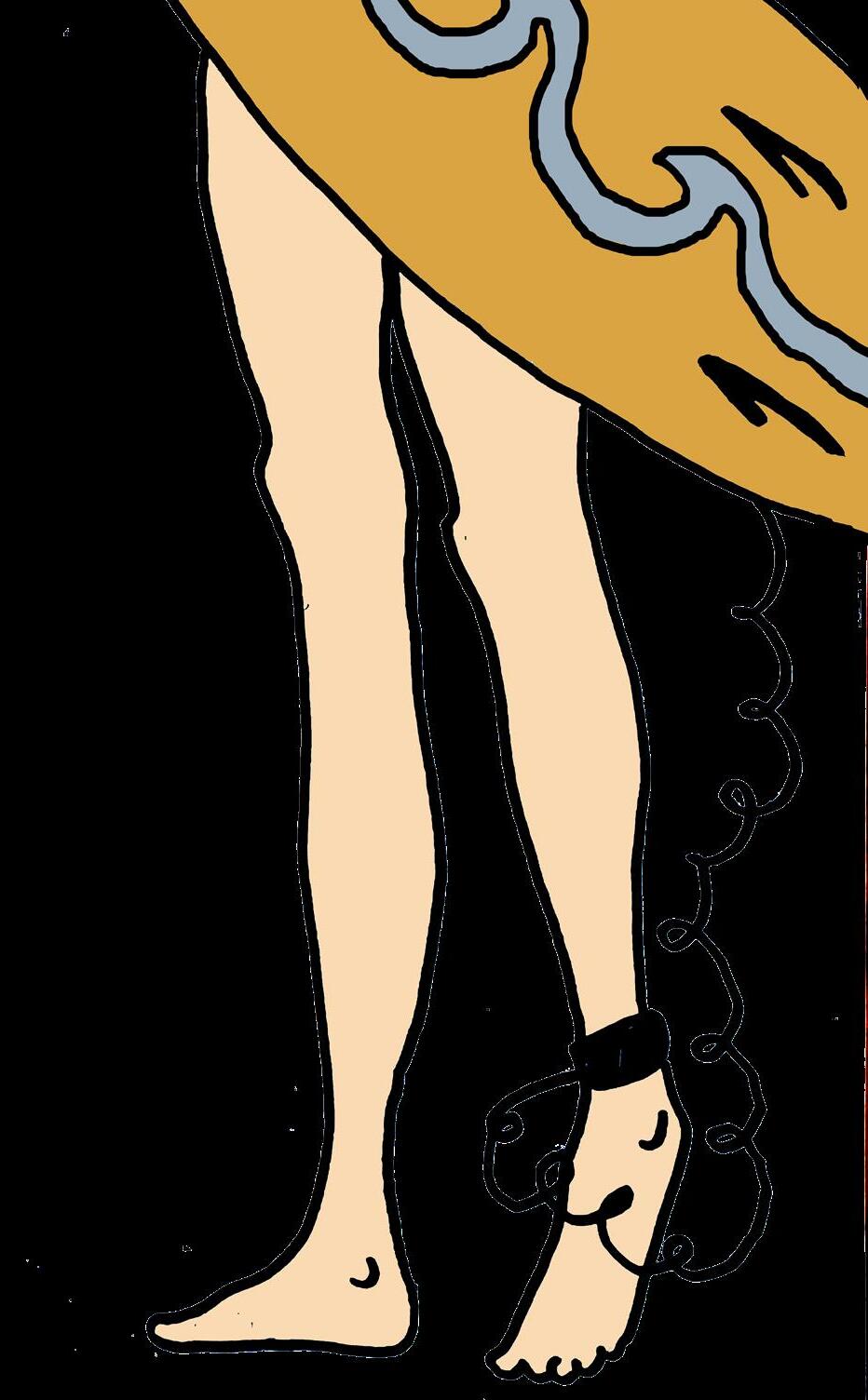

I don’t want to joke, though. I want to shake the people who think I’m an out of touch rich kid by their shoulders and tell them about how I felt so inadequate as a kid going to my friend’s two-storey houses with beautiful views. How a man followed my mum in his car through Dee Why all just so that he could shout at her to go back to where she came from. How in in Year 12, a teacher came into my Ancient History class and sang happy birthday to me in front of everyone without realising he’d mixed me up with my Sri Lankan friend. How, when I was in primary school, I would sometimes wish I was white, or wish that my dad had married a white woman so I didn’t have to feel so wrong. Then I’d get all guilty and wonder how I could think such cruel thoughts.
Last year, I wrote a sketch for a comedy show I was in called “Northern Beaches Civil War”. It was supposed to be a parody of the American Civil War where the Northern Beaches, in all its self-importance, tries to secede from the rest of Australia and become its own state. Filled with jabs at the people and places I’d grown up with, it wasn’t until after I’d written and performed it onstage that I realised how angry the writing was. It was a comedic skit, sure, but underneath my jokes I was being completely serious. The fact that white people would try and correct parts of my sketch afterwards made me angrier. But conversely, every night I performed it, I’d get laughs from POC, mostly from my high school friends who also shared similar experiences. It was cathartic being able to express how we’d all felt, but it was also the first time I’d ever actually stopped to think about how the Northern Beaches affected me during my adolescence.
Northern Beaches kids grow up in an unintentional bubble. Anything beyond Mosman is a mystery to them, and until I went to



uni, I confess I was the same. In high school, I legitimately couldn’t tell you the difference between the Eastern and Western suburbs. My childhood and teenage years was Brookvale, Dee Why, Manly, Narrabeen, Warriewood, Mona Vale. I know those places like the back of my hand, especially Dee Why and Manly. I want to turn my back on all of it, but I can’t: the pool in Freshwater where I learned how to swim. The newsagency in Curl Curl where my mum would buy me Paddle Pops after school. Boardwalk upon boardwalk upon boardwalk where I would stroll with my grandparents. The park in Balgowlah where I had my first kiss. Sitting on Dee Why beach as my friends and I had post-high school existential crises. As much as I try my best to ignore it, there is a sense of familiarity and comfort that pervades my resentment whenever I hop on the B-Line to go home.
How do I reconcile these feelings of nostalgia and familiarity, rooted in adolescent memories, with the complete and utter hatred I have for this place? I think about the way people have treated me on the Northern Beaches for the last 20 years of my life, and it makes me so unbelievably angry. I think about the things people say to me when they find out I’m from the Northern Beaches, and my resentment grows. I’m trapped in this encasement of frustration. It’s been simmering since I was a kid, and I want to break out of it, but I can’t. Oh no! My privileged upbringing wasn’t as privileged as it seems!
When someone asks me where I’m from in Sydney, how can I explain this concept to them in five minutes? The nuances, the exceptions and the rules, the emotions and the memories, all while making sure they have the right idea? Even now, writing this piece, I feel like I’m barely scratching the surface of what’s been bubbling underneath me. I can’t say everything I need to say, and if I’m honest, I don’t really know how to say it.
So I just settle for the same thing every time: “Yeah, it’s nice! Just a ten minute bus ride from Manly and lots of great beaches, haha.
Shame about the trains, though.
Bianca: UTSOC x Darlings x UTS (Taylor’s Version) x UTS Puzzle Society’s 2024 Pride Prom
Phoebe: JSOC x UTSOC x Women’s Collective’s Women in Media panel
Sara: Wear a Keffiyeh to Uni Day and UTS Main Revue!

Raph: Tokenist, Ally or Accomplice? Reconciliation Week presentation and panel
Ty: USYD Gaza Solidarity Encampment
Mia: C.R.A.P welcome drinks & trivia. And UTS Main Revue! I was in the cast teehee
Bianca: UTS Run Group on Wednesday mornings! I know it’s tough when it’s cold, but let’s stay active in winter!
Phoebe: Drag Queen Bingo (they have one in August, September and October)
Sara: Verti party round 2...fingers crossed!
Raph: Welcome week movie afternoon
Ty: O’Day wahooo
Mia: The UTS Identity Revue! Slots are open if anyone wants to pitch
Bianca: The Reading Room, specifically the upper level (aka level 5 and 6 of the library). I love the open light feel of this space and how much natural lighting it’s filled with, especially during the day!
Phoebe: The basement levels in Building 11. It’s got really comfy seating for individual study. Always chill and you can have privacy, but still an on-campus vibe.
Sara: Building 5A lowlight study! It’s always empty and so close to Chinatown for a study snack reload.
Raph: THE READING ROOM! It is honestly so beautiful and the vibes are always immaculate.
Ty: The UTSSA Office (soz swipe access only :-P)
Mia: The library is a basic answer, but I like being surrounded by other people who are desperately trying to meet their uni deadlines

Bianca: Highkey I love the Terrace or Soul Origin at Central Park Mall… They always overstuff their bowls and I think it’s great value for money
Phoebe: MAD MEX NAKED BURRITO WITH GUACAMOLE
Sara: Dodgy dumplings forever
Raph: Pork roll/rice paper roll from Cafe 10 obvs
Ty: Mad Mex
Mia: I think I’m responsible for 50% of Mad Mex’s revenue at this point
Bianca: Cornerstone Cafe ($2 coffees 4 everrrr)
Phoebe: Universal Cafeteria in building 6 – best iced oat latte on campus. Will walk across the bridge for it
Sara: Two Birds on George next to Central
Raph: The Terrace –sue me.
Ty: Cornerstone Cafe!
Mia: I don’t drink coffee, but I love a hot choccy from Universal Cafeteria



For a month where many of us has been quite preoccupied with exams and major assessment
tasks, we still had a generally successful month, with much more work still to be done.
1- Budget: This month, various student representatives from the UTSSA, including myself, attended the National Union of Students Protest on Budget Day in Canberra outside Parliament house. Whilst pretty weak in many areas, this year’s budget contained considerable detail for students compared to previous budgets under Albanese’s government. HECS indexation reforms and $319 and week paid placements are modest starts to much larger issues effecting theUniversities sector in Australia we at the UTSSA hope to see further action on under this government. Investments in ‘purpose built’ student accom and the announcement of a Higher Education Gender-Based Code are other particular highlights for students. I am also cautiously optimistic about the announced 40% SSAF requirements towards student organisations and what impact this will have on the future of the UTSSA beyond my term.
2- Palestine Activism: This month we have began to gear up for more Palestine activism at the UTSSA. From attendance at the Usyd encampment by UTSSA Representatives, to events held at our own campus, we have increased participation in this movement which has swept across university campuses in Australia and globally. We hope to do more however, and I hope that as a start we will be able to pass motion 8.7 unanimously this meeting, and formulate a quality statement for our goals and objectives in the future of this campaign.
With the commencement of exam season marking the fast approach end to semester, student activity has slowed down. The UTSSA’s digital presence has, however, remained active.
During the month of May, I have worked on the following projects.
1. Get to know your Students Association – social media series (ONGOING: This has been a semester-long social media campaign that has familiarised students with who their student representatives are. The series has increased the UTSSA’s Instagram and Facebook pages metrics and overall viewership. We are approaching the end of this social media campaign and are looking to do something similar next semester. If you have any ideas, please reach out!
2. Student feedback campaign:
The student feedback posters have been plastered in bathrooms across campus buildings. We have received responses but would love it if you could raise this in conversation with fellow peers too!
Once we collate responses, we will report back to the SRC in order to provide the UTSSA with greater direction about the issues we should focus on.
3. Concession opal card campaign (ONGOING): Earlier this month I published an article to the UTSSA website following up on the transport concession campaign. It detailed the response received from Jo Haylen, Minister for Transport and included three testimonials from international students about their burdensome daily commute. This was supplemented with an Instagram post with the above information. The purpose of this article was to keep students updated following the petition in March.
This week I worked on uploading a carousel post that promoted the various ways UTS provides financial assistance to students. They currently are offering financial assistance gift cards for opal cards and food. Students can book an appointment with Financial Assistance through Student Services reception. This service is especially important as students battle with cost-of-living pressures. You can find more information about UTS financial help here: https://www. uts.edu.au/current-students/support/financial-help/financial-assistance-programs
As the autumn semester for 2024 comes to an end students are well underway with studies and preparation for their exams. This month the as the welfare officer I was able to take part in a program run by the centre for social justice and inclusion. It is an ongoing project apart of the UTS Cultural Diversity and Anti-Racism action plan to help diversify how the acknowledgment of country is delivered at UTS by having students ofnon-English speaking background record the acknowledgment. As someone from an immigrant background I am fortunate enough to know another language, being Turkish, and assist in this great initiative.
I believe this program provides a practical resource to UTS and celebrates everyone’s mother tongue by recognising that Australia is a multicultural nation with a rich indigenous history. I was also a part of the partner project application grant panel, which is the first time that this has been done a UTS to provide funds to students looking to research and better
the culture at out university. Ultimately, this month has gone well for the collective by being able to take part in projects run by other organisations to ensure the well-being

of students on campus. This month has been particularly significant for international
students at UTS due to recent changes in visa regulations and ongoing advocacy efforts. The following report outlines key activities and initiatives undertaken to address these challenges and support our international student community.
Early Release
Students: Due to recent changes to the 485 visa, many international students have been impacted, particularly those close to graduation. In response, we held a meeting with UTS management to discuss measures to support these students. The primary outcome of this meeting was an agreement from UTS to expedite the release of final results for students graduating this semester. UTS management has begun the process of identifying affected students and is working closely with faculty members to ensure their results are processed and released as soon as possible. This step will enable students to apply for the 485 visa with old requirements without unnecessary delays, thereby facilitating a fast visa application done before 1 July.
In light of the changes to the 485 visa regulations, which now impose an age limit of 35 years, a petition has been initiated to request a transition period for current students who are above this age limit. As of

I am terrified that someone will split me open and see me for what I am and decide that none of it is worth it. I am waiting for the day I don’t dread myself.
26 May 2024, the petition has gained over 9200+ signatures from international students across various Australian universities. This strong response highlights the widespread concern and the critical need for a transition period that would allow affected students to apply for the 485 visa under the previous criteria. The petition is submitted to the federal government, aiming to secure a fair transition period for all current students affected by these changes.
Sometimes love can be, “Can you read that for me? I’m not wearing my glasses.” I want someone who will build me a wrap-around porch and
I don’t know how to funnel this depravity out of my system. I feel so dirty, diluting my blood with someone else’s so there is no room for me to exist. I want to abstain, but God, I am starving for absolution. None of it makes me feel special, or sustained, anymore. Fingers hooked into my mouth hurt. Teeth hooked on my shoulder hurt. The splintered ends of my hair suffer in the grip of some cruel man’s hands, and then in mine.
Meeting with NSW Senator Tony Sheldon: I, along with Sabrina, had a great meeting with NSW Senator Tony Sheldon to discuss the exploitation of international students in the Australian job market. This issue has become increasingly important, particularly within the gig economy, where many international students find employment. Our discussion focused on the need for stronger policies and protections to prevent exploitation and ensure fair treatment of international students. As a result of this meeting, we have agreed to conduct a comprehensive survey and further research into this issue. The survey will target international students currently employed in various sectors, particularly gig economy roles, to gather data on theirexperiences and challenges. The findings will be used to advocate for policy changes and the implementation of protective measures at both the state and federal levels. This initiative aims to enhance the working conditions and rights of international students, thereby improving their overall experience and well-being while studying in Australia.
Conclusion:

I don’t even want anything perfect. I just want someone decent. I don’t want love like a fist. I don’t want to be crushed, or gutted, or beat. I want a love that cools down my tongue. I want to marry someone who makes me wish they would marry me again, and again, and again. I don’t want to pretend that nothing bad ever happened to me. I need someone to know these things were real and not be disgusted by them. It doesn’t have to be anything elaborate.
I feel so dirty, . diluting my blood with someone else’s. so there is no room for me to exist. I want to abstain, but God, I am starving for absolution.
This month has been marked by significant advocacy and support efforts for international students at UTS. The early release of results for graduating students

soothing my fingers on a May morning. I want someone with gentle eyes. A boyish smile that feels like a hotel pool and a fresh towel and vanilla ice cream – all smooth peaks, ridges of sugar and pure. I want someone who works with their hands and has hair coloured by their hometown’s sun and a laugh that makes the back of my neck warm. I want someone who makes me feel like I was missed before I was even theirs.
and the petition for a transition period on the 485 visa are crucial steps in addressing the immediate needs of our International student community. Additionally, our ongoing dialogue with policymakers, such as Senator Tony Sheldon, and the planned research into student exploitation, demonstrate our commitment to longterm improvements in the treatment and welfare of international students.
Moving forward, we will continue to monitor the implementation of these initiatives and actively engage with stakeholders to ensure that the rights and needs of international students are Prioritise and addressed effectively.
No women before me were privileged to any of that. So I keep bolting down every door that opens for me. I twitch just hearing a doorknob turn, because I don’t know how to be good enough to deserve something good. I think about how I deserve someone kinder, who loves me tender like a mouth to a bleeding wound. Someone who won’t treat me like some starved dog, who will do tricks for affection, because I was taught love is only given to those who are useful. Most of all, I wish for a touch that does not make me sick.
won’t want anything from me, except to share a glass of lemonade. I want someone who makes me want to go home. I want a love that feels like stove-top flames girl crushed reference list

I’m Mia, the President of the UTS Students’ Association for 2024. Over Autumn Semester, I focused my efforts significantly on advancing and progressing the Palestine Campaign at UTS, improving UTS’ sexual harm reporting mechanisms, as well as improving the UTSSA’s pathways for student feedback and voice.
The Palestine Campaign has been a tremendous effort within the UTSSA and amongst members of the UTS community. Our key goals are centred on disclosure and divestment from partnerships and research with weapons manufacturers and Israeli institutions. Notably, the UTS Staff for Palestine Group, the Palestinian Youth Society, UTS Students for Palestine and Students Against War have all been involved in pushing forward our demands across the University. The UTSSA’s campaign is established solely from feedback we have received from affected communities within UTS. I strongly believe in protest actions that are safe, effective and a direct representation of what UTS students want, and am looking forward to initiatives we are planning for Spring Semester.
The campaign for improving UTS’ sexual harm reporting mechanisms has been a goal of mine since my first year on the Students’ Association. Through the 2022 Student Partnership Agreement, I developed policy and goals alongside peers in the UTSSA that focused on improving the processes engaged following student reports of sexual harm at UTS. Since then, a key goal of mine has been implementing a case management system, similar to those at other universities including LaTrobe and Monash, which reduces the administrative burden and re-traumatising nature of reporting for students currently. I am proud that as of June, UTS has agreed to fund three new positions to manage reports of sexual harm, which I hope will significantly reduce the burden and stress related to reporting and encourage more students to come forward.
Finally, I believe that the UTSSA functions best when we have the largest input from the student body. To function as a union, we must be representing our members, and this will only happen if students know about us and know when to come to us with issues.
The ‘Your Voice Matters’ campaign will hopefully allow us to get a bit more student awareness and enable us to collect data on what issues and concerns students want us to work towards. The QR code for this campaign is below:
There’s a ton of other smaller projects I’ve been working on in Autumn Semester as well, such as looking at the role of undergraduate tutors in the Faculty of Engineering and IT, and standardising assessment and extension policies across faculties. Hopefully Spring Semester brings some more successes for the UTSSA and the UTS student body – I am feeling positive about this!


Maha Syeda She/Her CW: Domestic Violence
This guy appeared in my life by some cosmic dissonance and of course, he is absolutely perfect. He has sensitive woodland eyes, canopies circling his pupils, lines that erupt around his mouth when he smiles (like parentheses of joy), and these sturdy, thick fingers, logs of bone, that he wraps around his pen while he writes letters and meeting minutes and coffee orders. And of course, he has broad shoulders that are framed like a mountain-scape by the wood-panelled window behind his desk.
But I can not (I refuse to, actually) muster up any attraction towards him. Unless my nine a.m. meetings begin drying my eyes out, then I imagine what he might look like putting himself together in the morning: damp-haired/misty-eyed/jaw cracked in a yawn/ white shirt/stretching sheer across his back/milky windowpane blurring tattoo lines/ constellating moles/and the ladder of his spine/tie wrapped loosely around his knuckles, and scene.
Instead, I mash all my ugliness into the space he leaves for me to sit in during our lunch hour. I make it unbearable. I don’t really listen to a word he says. But it hurts my feelings to hurt his feelings, so I just rove my eyes all over his face and ruminate. I tug the tag of skin at the corner of my mouth with my teeth, pick apart my sandwich, and then rip it to pieces to
swallow it down. I let his words mellow my insides, because one day I want to say, someone beautiful touched me. He talks about his mother. How do I share something about my own mother without saying, I want her to love me anyway, despite what she made me.
A perpetual cloud thunders in my mind. It changes shape all the time, but when I look at him, it more or less takes the shape of a hundred thousand dead women. Ancestral women corralled into mud houses, eight children, each conceived with a tank of resentment and animosity and a barely-there husband. Burned alive, buried alive, dead girls walking, sacrificial lambs wailing. Their skeletal remains on the stove, crushed into dust and then rolled into bread to feed their sons so they can become bigger, better jailers. Did you know my mother wanted to be a doctor? Her saddest memory is her big sister’s wedding day. Did you know she wanted real love? But she gave up everything for a man who eats alone now, because he smashed one too many dinner plates in front of his children.
I do exactly what my mother did and all the mothers before her: I refuse decent men. She did not have to teach me to be this way, I learned it by watching her quivering lips and laboured breaths and the blotchy red patches circling her neck. I’ve learned that it’s harder to love a decent man, with a decent laugh and a


decent, deliberate way of saying my name that feels like the hot press of a mouth on my sternum. That makes me pulse with anything anything anything.
Why would I settle for a decent man when I owe my life to men who seek to destroy? That’s how I came to be. I would want decency much more if my father lived up to what a father should be, and if there were fewer excuses for volatile men like him. I wish I could meet my grandmother, before she was a married woman at 14, and take her somewhere far, far away, so she would not become a tragedy forever infused in my blood.
I can’t stop thinking about how my father cursed me: one day, when I end up begging on some shit-covered sidewalk, the same men who will spit on me in broad daylight will be the same men who I’ll let spit in my mouth for money when the moon drowns itself in a shadow. God’s omnipotent eye will turn blind to my howling cry. And worse, I will be free, so free, that the universe will slip me by. Because when I die, my gravestone will be void of any marking. No one will care for who I was.
Reasonably so, I find myself exclusively preoccupied with men three times my age who have three times my strength because I need someone older, someone wiser (not God, not anymore), to teach me how to be anyone but that. To protect me from my fate. I need their capable hands, generous and unrelenting, to teach me how to be. I can’t stop looking at them, the motor oil streaking their hair, their softly pleased smiles, and the weight of their tender hands at the hinge of my jaw: easing it open, open, wide.



I let my wanting curdle into shame because it is so revoltingly wrong to need. To crave someone’s touch to prove that I’m real and I can be good and I can make someone feel good. To shapeshift into someone’s fantasy because, for a few moments, I am redeemed through their pleasure. Needing to prove that I can take and take and take it so well, everything that comes my way. Needing to sedate the aches of the myriad of selves buried alive within me. Buried in that burning house.

I am terrified that someone will split me open and see me for what I am and decide that none of it is worth it. I am waiting for the day I don’t dread myself.
I don’t know how to funnel this depravity out of my system. I feel so dirty, diluting my blood with someone else’s so there is no room for me to exist. I want to abstain, but God, I am starving for absolution. None of it makes me feel special, or sustained, anymore. Fingers hooked into my mouth hurt. Teeth hooked on my shoulder hurt. The splintered ends of my hair suffer in the grip of some cruel man’s hands, and then in mine.
I don’t even want anything perfect. I just want someone decent. I don’t want love like a fist. I don’t want to be crushed, or gutted, or beat. I want a love that cools down my tongue. I want to marry someone who makes me wish they would marry me again, and again, and again. I don’t want to pretend that nothing bad ever happened to me. I need someone to know these things were real and not be disgusted by them. It doesn’t have to be anything elaborate.
Sometimes love can be, “Can you read that for me? I’m not wearing my glasses.” I want someone who will build me a wrap-around porch and
I feel so dirty, . diluting my blood with someone else’s. so there is no room for me to exist. I want to abstain, but God, I am starving for absolution.
soothing my fingers on a May morning. I want someone with gentle eyes. A boyish smile that feels like a hotel pool and a fresh towel and vanilla ice cream – all smooth peaks, ridges of sugar and pure. I want someone who works with their hands and has hair coloured by their hometown’s sun and a laugh that makes the back of my neck warm. I want someone who makes me feel like I was missed before I was even theirs.
No women before me were privileged to any of that. So I keep bolting down every door that opens for me. I twitch just hearing a doorknob turn, because I don’t know how to be good enough to deserve something good. I think about how I deserve someone kinder, who loves me tender like a mouth to a bleeding wound. Someone who won’t treat me like some starved dog, who will do tricks for affection, because I was taught love is only given to those who are useful. Most of all, I wish for a touch that does not make me sick.

won’t want anything from me, except to share a glass of lemonade. I want someone who makes me want to go home. I want a love that feels like stove-top flames girl crushed reference list

I’m Mia, the President of the UTS Students’ Association for 2024. Over Autumn Semester, I focused my efforts significantly on advancing and progressing the Palestine Campaign at UTS, improving UTS’ sexual harm reporting mechanisms, as well as improving the UTSSA’s pathways for student feedback and voice.
The Palestine Campaign has been a tremendous effort within the UTSSA and amongst members of the UTS community. Our key goals are centred on disclosure and divestment from partnerships and research with weapons manufacturers and Israeli institutions. Notably, the UTS Staff for Palestine Group, the Palestinian Youth Society, UTS Students for Palestine and Students Against War have all been involved in pushing forward our demands across the University. The UTSSA’s campaign is established solely from feedback we have received from affected communities within UTS. I strongly believe in protest actions that are safe, effective and a direct representation of what UTS students want, and am looking forward to initiatives we are planning for Spring Semester.

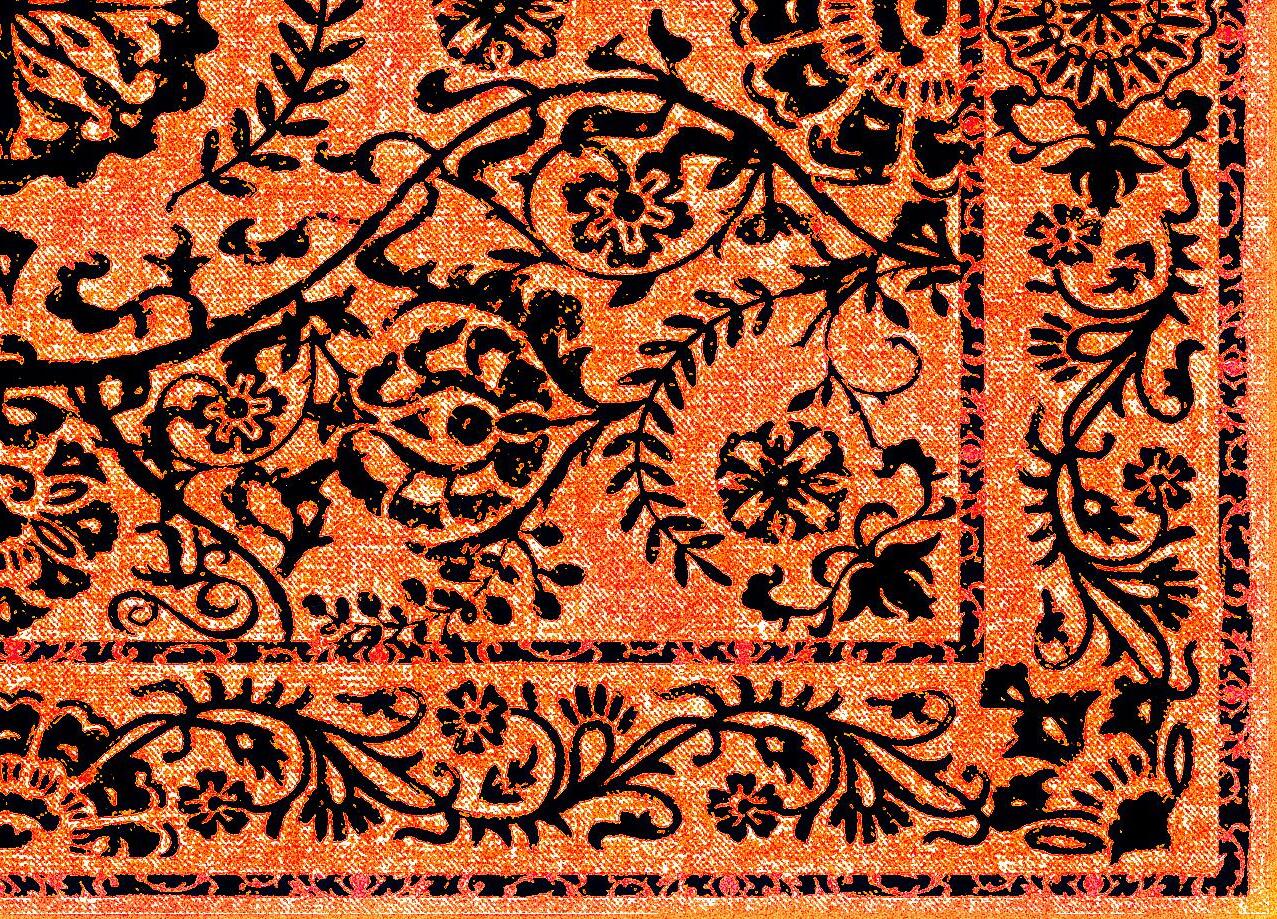
For a past assessment, I attended and analysed the play Blacklisted, at the 2023 Sydney Fringe Festival, with the aim of discussing the shared experiences that immigrants and people of colour have at popular culture events, that explore our personal identities, identifying why popular culture is so valuable to this community. Blacklisted, directed by Jessica Fallico and written and performed by Almitra Mavalvala, explores the complex dynamics of being a person of colour and an immigrant, trying to find a place to call home, all while enduring the displacement of home. This autobiographical piece explores Mavalvala’s journey as a student who has faced multiple denied visas, on the basis that she holds a Pakistani passport, and the way she has navigated her emotions, her family, and her home. This play cleverly takes a rather niche experience of displacement and translates it into a universally understood feeling of wanting a place where you can wholly belong, creating an environment where, no matter your cultural background, you can relate to and feel the emotions of the performer. As I break down moments of my experience at this event, I hope to unveil why popular culture events such as these are so significant, not only to the people who directly identify with the experiences, but with all, and the ways in which they can create cultural change, especially within the current Australian milieu.
As I entered the theatre, the space felt familiar, with several people dressed in traditional South Asian clothes. Waiting in the lobby, I noticed the pleasant atmosphere and the excited chatter, spoken in not just English, but Hindi, Urdu, and Arabic as well. Ten minutes quickly passed in the lobby, and we all began to stream into the theatre, which was truly as black box as you could get; a simple open room, with black walls, and a flat floor. However, the bare theatre had been intricately designed to transport us directly to Karachi, Pakistan.The first thing that hit me was the distinct warm smell of agarbatti that wafted through the space, creating pockets for the dim streaks of warm light to shine down onto the Persian rugs and delicate pottery that sat on the stage. Slowly walking through the crowd into the seats, the ringing sound from a singing bowl reverberated in the room, as the lead actress playing it paced back and forth barefoot around the theatre. The audience were also integrated into the set, with rug seats offered for viewers sitting alongside the performer. As the people slowly filtered into their seats, I felt a few small kicks onto my chair, and realised just how close in proximity we were to each other; I crossed my legs to avoid bumping anyone. When the crowd’s gentle conversation settled alongside the singing bowl, the elegant sounds of a tabla and sitar tuning caught my attention, their musicians sitting slightly away from the main set in a dimly lit area of the theatre.





Not long after, the play began with an acknowledgement of country, and a small introduction from Mavalvala. The lights slowly rose, shifting from a soft warm glow into a harsher blue spot that directed attention towards the lead actress. Accompanied by a live band, she began singing a jazz and blues inspired piece that blended with the traditional Carnatic music that resonated from the corner of the space. As the play progressed, I understood the themes of displacement and belonging that held the audience tightly together. A distinct moment in the show that really pushed the boundaries of ‘theatre’ was when the actress passed out fresh hot cups of chai to the audience seated on the rugs. Although I didn’t get a cup myself, I recognised how each person who did reacted quite similarly, holding the cup tightly between two hands, taking a slow sip and releasing a comforting sigh. A similar moment of unity I noticed within the crowd was towards the end of the show, when the actress began singing a song about the collective troubles of people of colour and immigrants. At this moment, as Mavalvala sang about isolation, family and home, I found myself completely connected to everyone in the crowd as many of us wiped our teary eyes and sniffled as the song ended and the space went silent. These unmistakable responses that so many of us experienced goes to show just how connected we all were, and the universality of the feelings explored in the show.

Reflecting upon this event, I can clearly see the significance it has within popular culture, but also beyond popular culture, as it highlights the people of colour experience, something that is typically neglected within the Western context. It redefines the understanding we all have around the ideas of ‘being blacklisted’, shifting cultural values surrounding the ideas of racial discrimination and xenophobia, while also raising awareness around the ongoing impacts of colonialism. By normalising such conversations and placing them within popular culture contexts, such communities can find a space where they can be vulnerable, while remaining relevant to the general greater cultures that exist within the contemporary context.
As someone in the space, I felt deeply represented through the nuances of the character and the familiarity of the space, set and music, but I also felt truly connected to the people I sat around as we all cried, sighed and laughed in harmony, displaying our inherent connection to each other as humans. However, as an observer of the event, it was rather beautiful to see the distinct reactions of different audience members, especially of those who looked around the space to try and make sense of an experience others reacted to. Even then, I found that the people who didn’t directly identify with the character were still able to experience and share the emotions that we all did, clearly illustrating the simplicity of human nature, and how we can all share an understanding of an experience, even if it isn’t inherently personal.
Breaking down this popular culture event helps us deconstruct the rather nuanced experiences that immigrants and people of colour have, therefore allowing the wider community to better understand the almost universal experiences that we as humans all share, surrounding personal identities and finding a sense of belonging. In turn, this reveals why popular culture at its core has the potential to be so valuable to marginalised communities, as it provides a platform for voices to be shared and heard, fostering a sense of identity and belonging while challenging dominant narratives that otherwise silence these experiences.









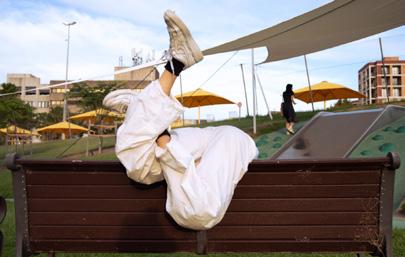
I based this series off an assignment that became sort of a self reflection journey. It’s about extroversion and self reflection. The following images were created by giving a random prompt to the model who acted it out according to their interpretation. Over time, it became clear that the images that came to fruition in the end included a sense

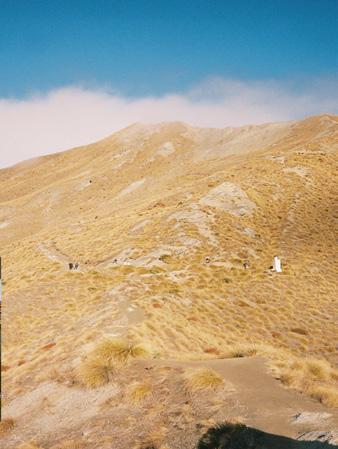
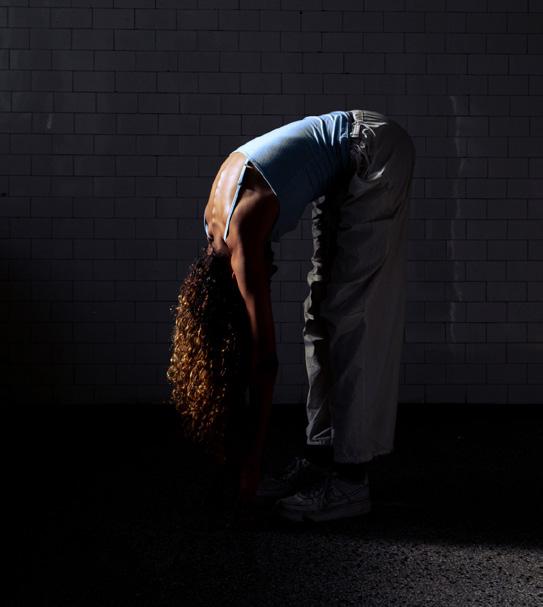
of me
Essentially a reflection of who I am, confusing right?
Model: Melody Kiptoo
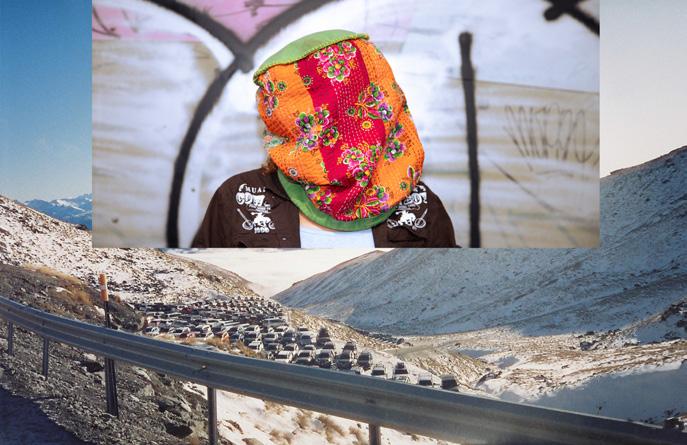

Oluwatimilehin Akindoyeni
[Pronouns of contributor - He/ Him]
Oluwatimelehin Akindoyeni (he/him) @mrskengg
[instagram name - @mrskengg]
Living Things: A Cycle is a combination of two ideas. It explores how we make, and how these materials inspire what we create. Working directly with archival materials from the Powerhouse Museum, I became fascinated by a series of vases and cups, as well as a horseshoe and a photo of a flower. All of these objects are from Gadigal land (Sydney). To counter these objects, I also uncovered several objects from my homeland, such as clay figures produced in the Yoruba lands in West Africa.
Working with these found objects I then involved my older brother who attempted to bend into the shapes of the objects from both continents. I then took his portrait in various states of contortion. The result is akin to a performance or dance that attempts to link my two worlds together.


The second part of this project emerged by noticing all the interesting personalities of plants in the Inner West suburb of Erskineville. Over a period of weeks, I collated an archive of all the plants that caught my eye. These images were then carefully collated into collages.
In the end there are ten photos and ten collages sitting next to each other. Linking together time and place, this forces us to consider how what we make and how what we are given, will always hold weight and value in the future.
Want to be part of our next printed edition of Vertigo, or have your article posted on our website?
Vertigo relies on the submissions sent to us by our readers, and we take your submissions all year round. We love reading whatever it is you’re willing to share, whether it be your article, your creative writing piece, your design, your fashion, your art… whatever it is, we want to see it!
Vertigo knows no limits.
- Student News
- Politics + Law
- Arts + Lifestyle
- Society + Culture
- Showcase pieces (photography, fashion + more)
Send us an email and get involved!
Our submissions email is submissions@ utsvertigo.com.au and one of our editors will be in touch with you.
Follow us on Instagram (@utsvertigo) to stay in the loop. Our Instagram is where you will see our callouts for a chance to be featured in Volume III.



We are constantly publishing articles for you guys. Head to our Instagram (@utsvertigo) and our website utsvertigo.com.au for daily updates and new articles each week.

Aditya Rao
David Tran
Declan Bolger
Esha Kaur Tiwana
Maha Syeda
Mayela Dayeh
Mia Rankin
Oliver Whitehouse
Oluwatimilehin Akindoyeni
Sara Chaturvedi
Amanda Patmore
Bianca Drummond Costa
Bianca Wong
Emersyn Wood
Georgia Corona
Isabel James
Melody Kiptoo
Mia Rankin
Phoebe Quinn
Raphaella Katzen
Thanh Tan (David) Tran
Tyberius Seeto
Declan Bolger
Esha Kaur Tiwana
Maine Petterson-Heard
Mannix Thomson
Mayela Dayeh
Omar El-Sobihy
Sara Chaturvedi


